At the Marty Himes Museum, a six-decade pile of motorsports heritage is served up raw
Bay Shore, N.Y. — You won’t see any ads for it. Not in the local papers, not on TV, and certainly not online. The Himes Museum of Motor Racing Nostalgia is one of those places you sort of stumble upon, although it does have a website. Perhaps “collection”, or “shrine”, or “hoard” are more apt monikers for Marty Himes’ lifetime assemblage. “Museums” contain artifacts, and this one is home to many, but Himes himself explains their significance in lieu of those little placards they put next to objets d’arte displayed in the Louvre (although many of his pieces have handwritten tags). Aside from that, there’s the sheer volume of amazing history.
Marty Himes, a retired 81-year-old truck driver, loves racing. He always has. He grew up a block away from Freeport Municipal Stadium on Long Island, where all kinds of races were held over the years, and he has raced, hung out with other racers, and has absorbed bits and pieces of local motorsports history as local tracks have closed one after the other. A few he has gathered over the years, among the many bits of memorabilia, include: signs from the Islip Speedway, near where he’s lived since 1965; a bit of railing from another long-closed track on the east end of Long Island; signed posters; unsigned posters; models of cars; actual cars—28 of them; pieces of cars; dozens of photos showing Marty standing next to race cars with famous and semi-famous race car drivers and movie actors; antique firefighting equipment; an old outhouse signed by famous drivers. Himes has it all, and then some.
“I have more stuff than anyone, guaranteed,” he said as I toured his trove. He’s quick to tell you that he won’t refuse any donation, a claim backed up on his website. “You probably couldn’t absorb all this in one day, because I can’t, and I live here. If you looked at all this stuff, you’d be here for a week, just in one room.”
Many of the people I’ve met over the years who were afflicted with the automotive bug—building cars, racing them, restoring them, or digging through pictures and stories about them—have been collectors of one sort or another. I’m certainly no stranger to this phenomenon and was dealing with something out of my own pile of stuff when I chanced upon the Himes Museum one sunny afternoon. I had inadvertently lit the corner of my garage on fire when an old motorcycle I was working on backfired onto a puddle of starting fluid. (You know how it goes.) Himes’ place happens to be right next door to the drab industrial building that houses the fire extinguisher refilling shop near me, thus how I found myself there. Both buildings are on a dead-end street, cars buzzing by at one end, commuter trains thundering by on the other.
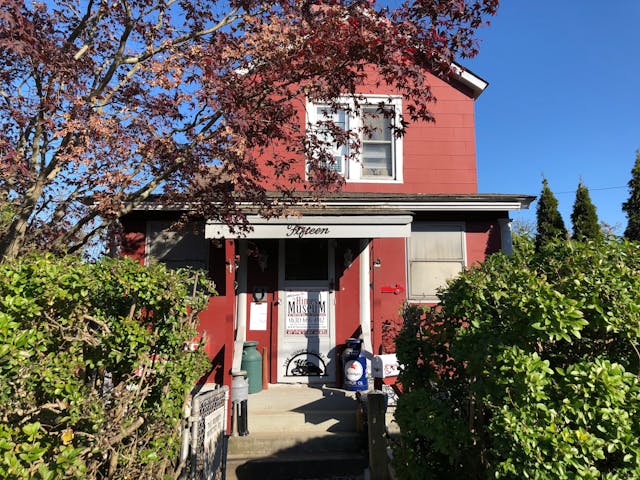
Although the Himes Museum isn’t in a great location for attracting random foot traffic, the collection is hard to miss if you’re passing by. (I had to wonder how many commuters had seen it from the train day in and day out, thinking to themselves, “I’m gonna have to check that out someday.”) Himes’ yard is busy with curious objects, and there’s a brightly painted—if a little faded—race car sitting outside the hedge in front of the house to welcome the curiosity of strangers. The old metal visible through the front gate draw you in, beneath a sign that reads: “Thru these gates pass the best damned drivers on Long Island.”
Your tour, should you elect to take one, is a sort of choose your own adventure. Himes simply asks, “How much time you got?” and if the answer is “plenty,” the journey begins at the logical starting point—the front entrance to his house. The front room used to be a closed-in porch and was probably a nice, sunny place to sit on a chair and have a cup of coffee. But with Himes’ help, the years have filled it, floor to ceiling, with helmets, shoes, photos, mugs, boxes of posters, trophies, car parts, and more.
“This is a 50-pound. coal bag,” he says, holding up a flattened paper bag that looks as new as it did when the coal truck still came around. “You can’t find these anymore.”

Next stop, what used to be the living room, its knotty pine paneling obscured by more—much more—of the same.
“This is a photo of me with Mickey Rooney and the car he drove in that picture about racing.” Himes holds up a signed, framed picture with a grinning, older Mickey Rooney, a younger Marty Himes, and an open-wheel race car. The film was The Big Wheel.

This room has a shelf up near the ceiling, and a long rank of racing helmets stands at attention, facing the center of the room, where sits a huge bronze trophy featuring a smiling bust of Bill Schindler (who died in a Sprint Car crash in 1952). It sits atop a pile of stuff covered by a framed Joie Chitwood Thrill Show poster. A grid of small model cars sit in an acrylic display box topped by a Flying A gas pump globe. Somehow there is order among the chaos.
And we’ve only just begun the tour.
Himes began his own racing career at Freeport in 1955, and won the novice division there in 1962. He drove a ’36 Hudson, a ’36 Chevy, sports cars, midget cars, and others over the years, racing at Islip Speedway, Bridgehampton, Lime Rock, and other tracks. At one point, there were as many as 40 tracks on Long Island alone, and Freeport’s 0.2-mile oval was one of the most popular. As the years accrued, so did the thicket of trinkets now on display in and around Himes’ home. Tracks closed, and he was more than happy to hoover up their detritus.
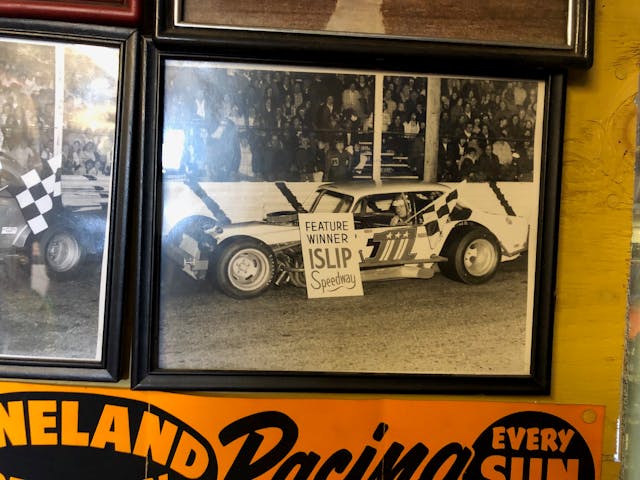
We move to the dining room. There’s a table, but it’s buried in model cars and boxes of posters, and even a model house. There’s more in the kitchen, which also has an extra stove—one of those novel old-timey ones with a porcelain finish. (It works. He uses it every day.) There are antique food boxes displayed on a shelf near the ceiling.
“I got all old stuff in this house,” he says.
Even Himes’ bedroom is packed with memorabilia, including pictures of the gas station and store his family owned in Freeport a century ago. Amid all of it is a picture of a young Himes, his dark hair slicked back in the semi-pompadour that was fashionable then, and that he still wears now, albeit in white. It is flanked by a photo of his father, standing in an army camp somewhere, wearing one of those uniforms with the baggy trousers and Smokey Bear hat.

“My kids grew up here, but they weren’t allowed to touch nothing,” he explains. His daughter floats in and out of the kitchen, preparing something for herself before heading off to work. She regards me briefly and curiously, and although I never speak to her, her face seems to ask the question: “Who is this guy and why does he want to see all this junk?” But I could be wrong.
We emerge into the back yard, which is no less crowded, and begin to make our way through the warren of containers, office trailers and small garages that house the bulk of Himes’ collection. This is the section where the visitor will observe entire cars—big ones, small ones, colorful ones, rusted ones, fully outfitted passenger cars, stripped-down track cars—and other things—a circa-1900 cast iron fire extinguisher and an assortment of shoemaking tools—that are too bulky to go in the house.
“This is a lot of history, but what happens to it when I’m gone?” he asks. Does it go to the dump? Nobody lives forever. Nobody.”
The letters that announced visitors’ arrival at the Freeport Municipal Stadium years ago sit in a teetering stack next to one of the garages. The track closed in 1983 and was razed 1989, amid a fight over what would be done with the land.
“I kept them when they tore the place down, but do they mean anything to anyone?” he asks. “Probably not, but it means something to me, and I got it.”
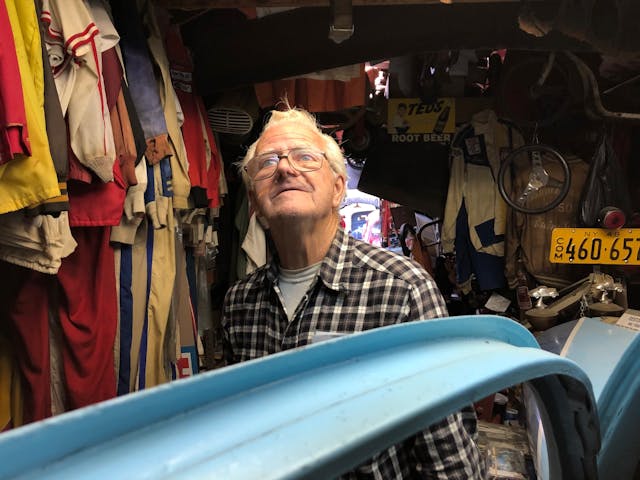
Himes can tell you who drove each of the cars and when, and on what track. He can show you his first bicycle, which he bought new. He can pull any one of hundreds of jackets hanging in rows against the wall and up near the ceiling and tell you what it means. To most, it might look like an endless procession of old things, stacks and racks of it stretching up past old ceiling lights into the rafters. Every now and again, his eyes will alight on something that recalls a fond memory, and he stands transfixed, a blissful expression on his face, looking not unlike one of the rapturous religious figures from a Renaissance devotional painting.
“Look at this. Stuff,” he says. “I don’t waste space in here.”
The tour winds past an old traffic signal, some road signs, and a ’37 Plymouth he says can go anywhere, anytime before you end up standing at the end of the driveway, wondering what just happened. It’s then that you realize that history has its archivists and its editors. Mr. Himes is not one of the latter. If you’re the type of person who likes to see history, unvarnished in all its jumbled complexity, his unforgettable museum should be on your list.
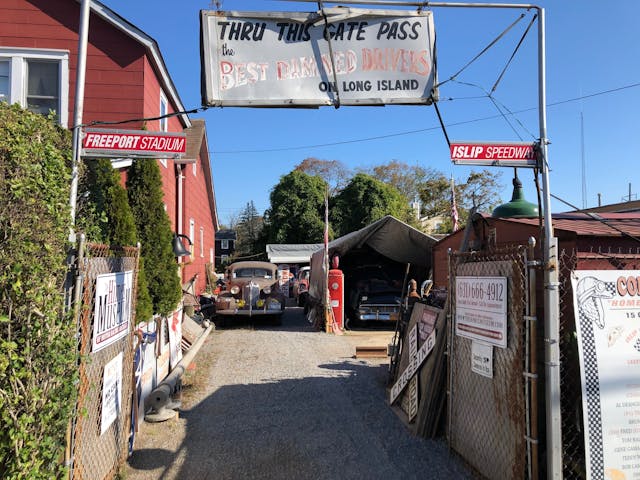
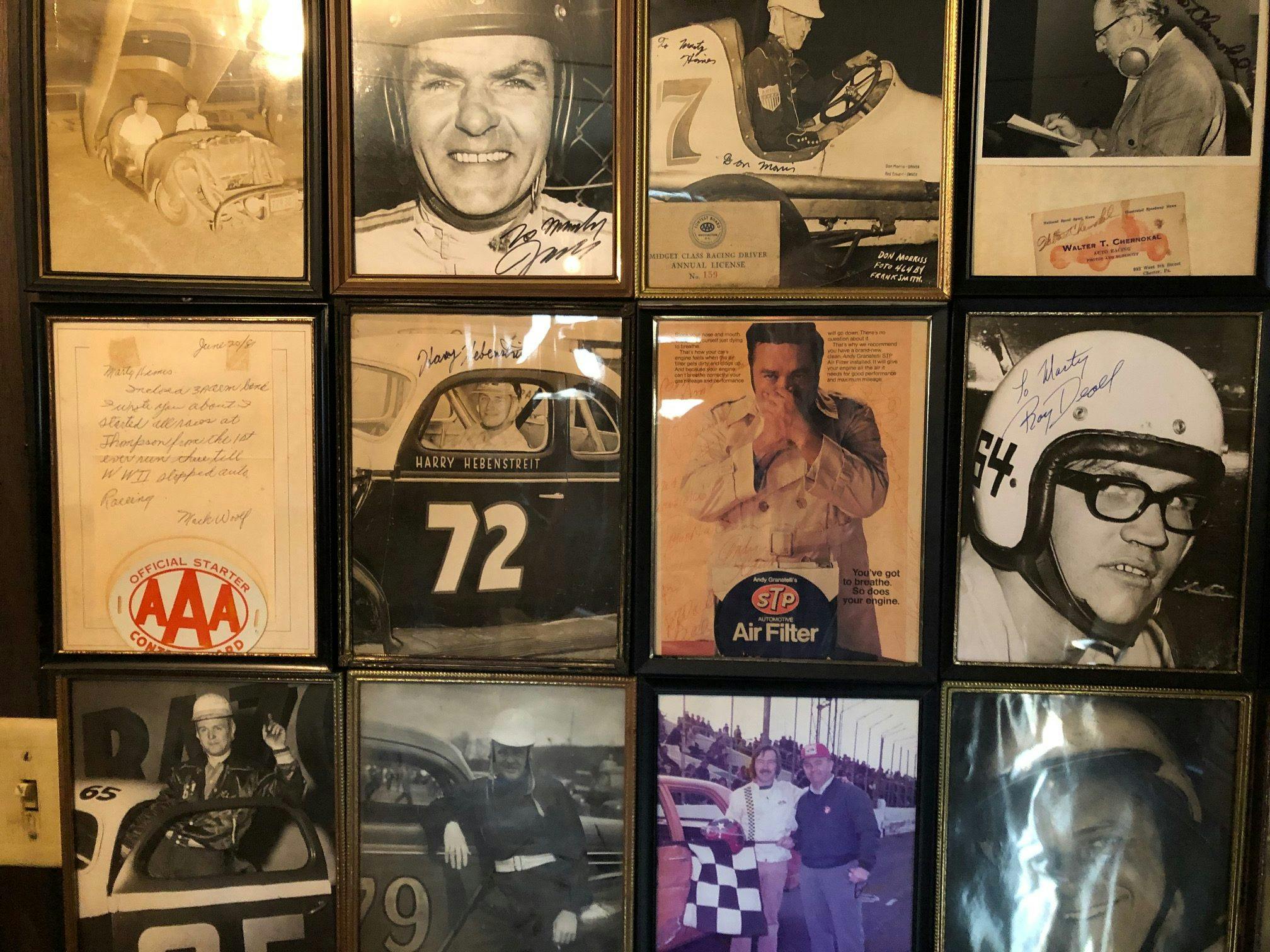
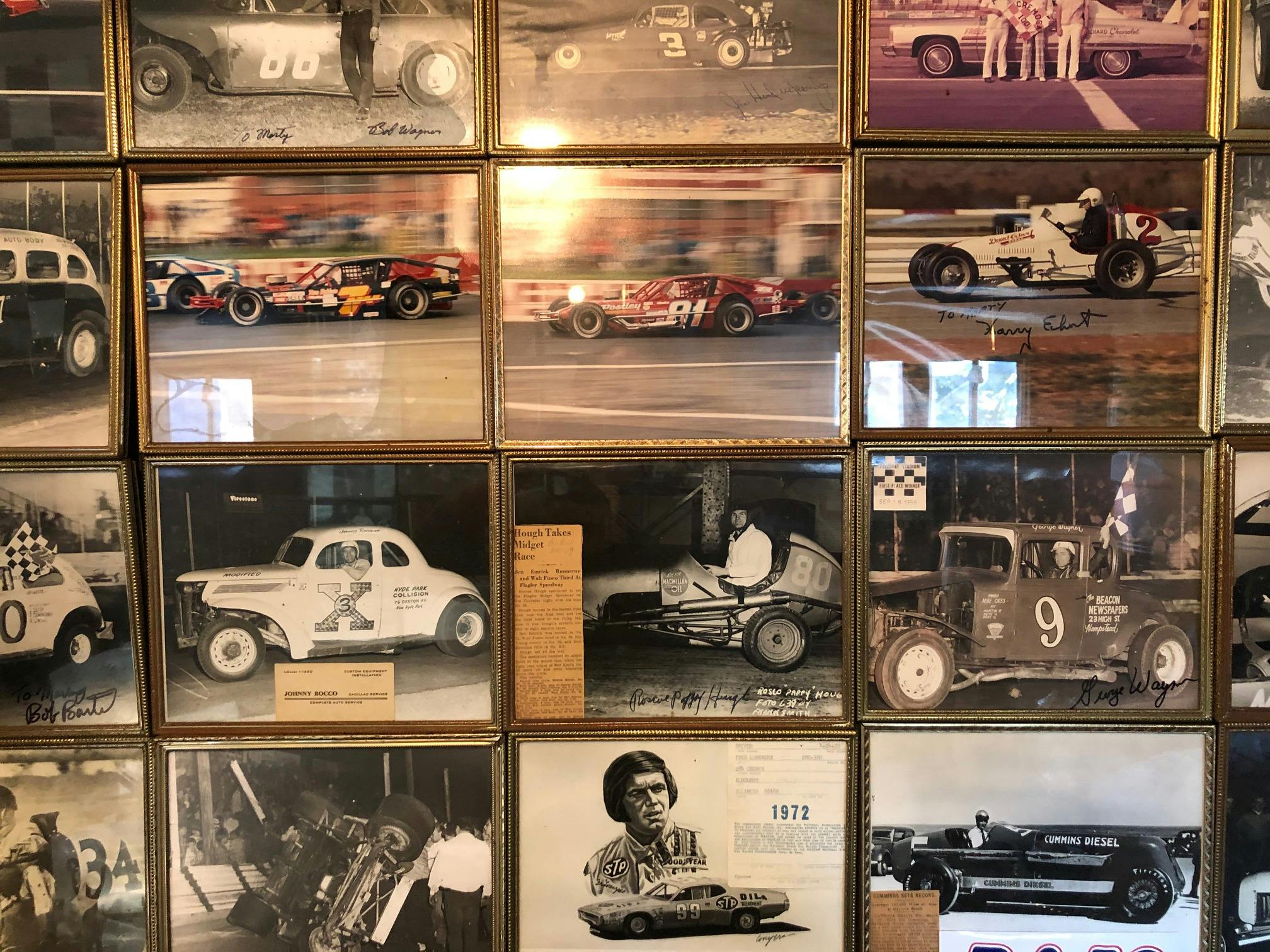
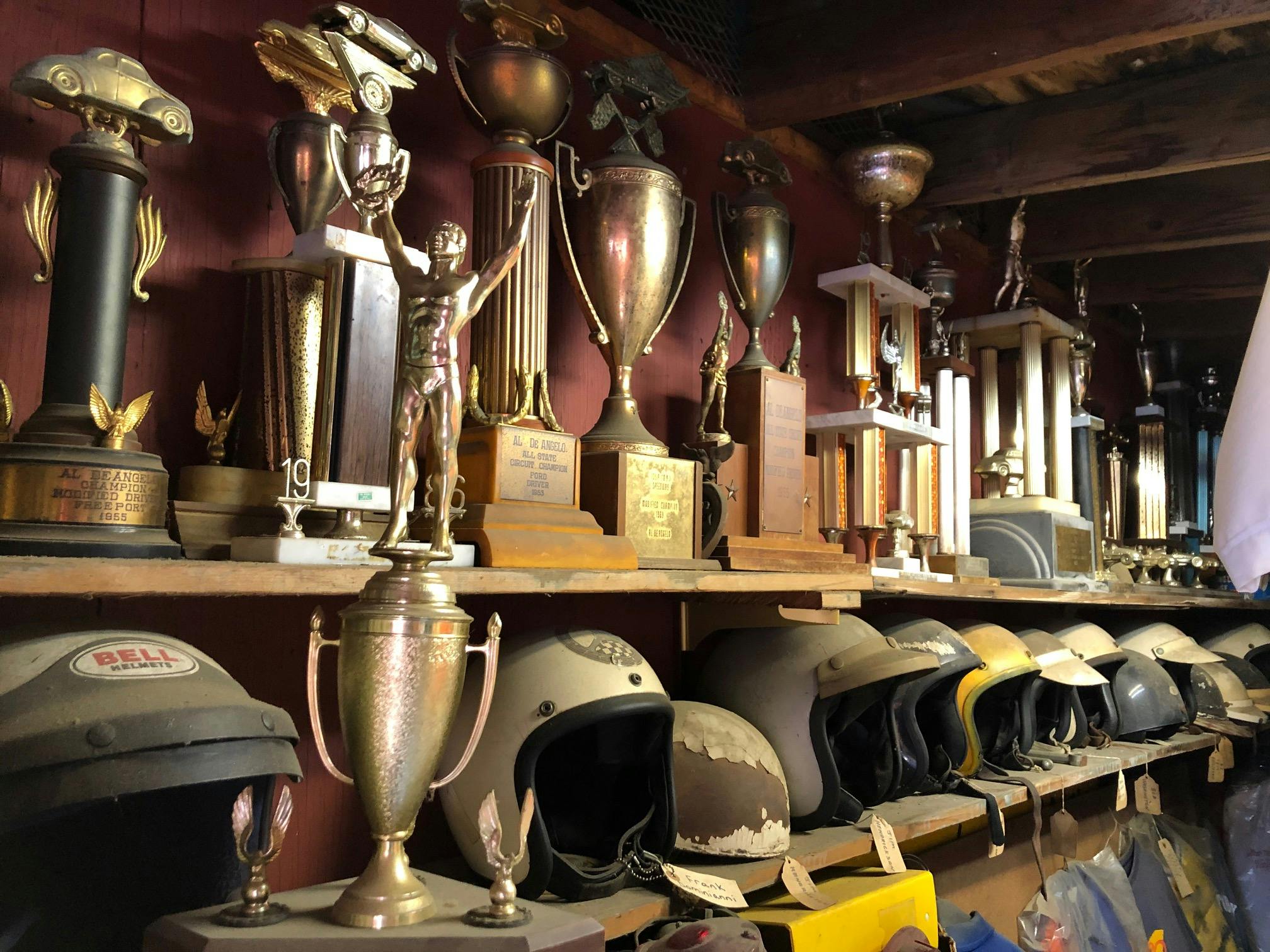
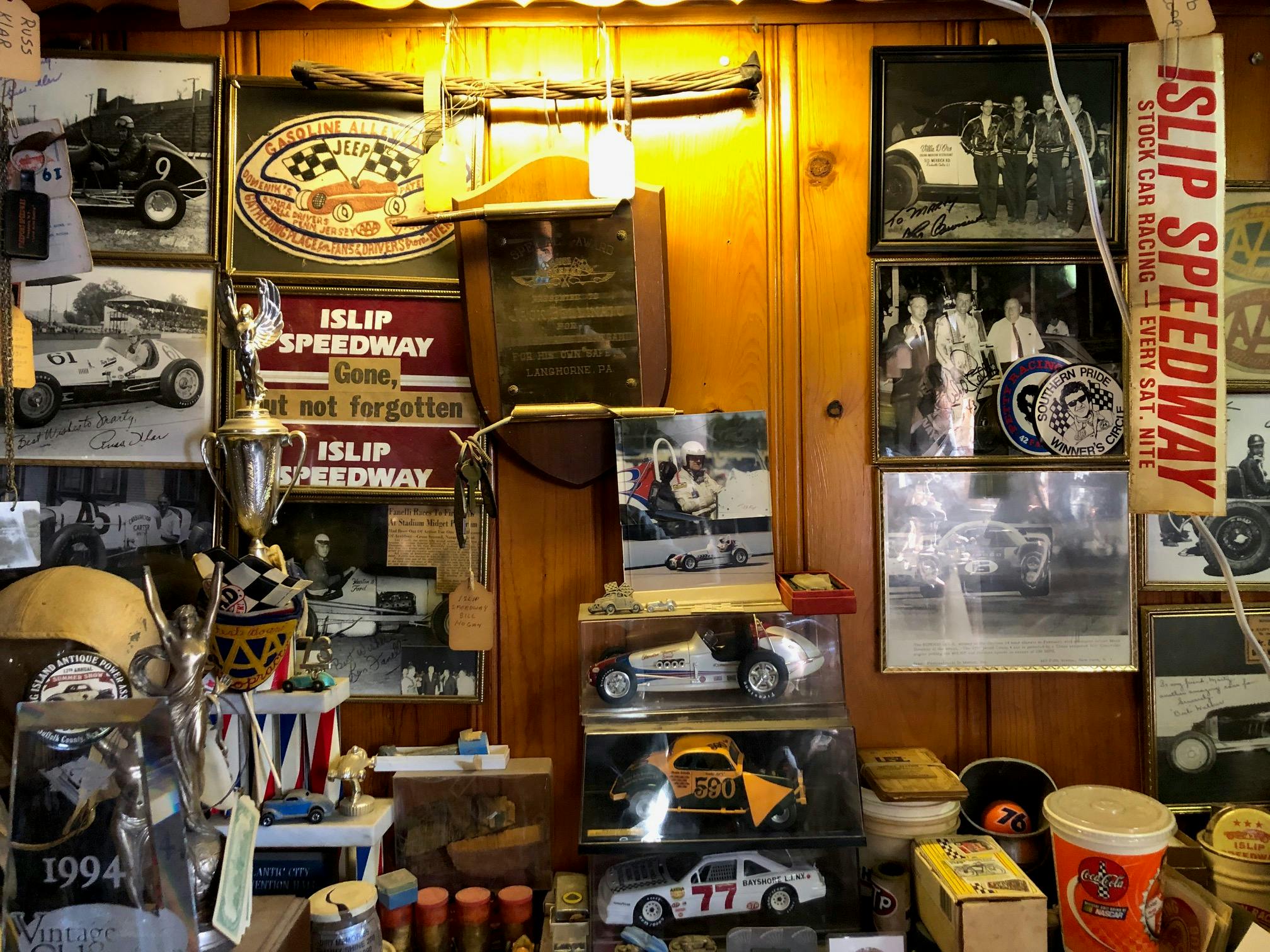
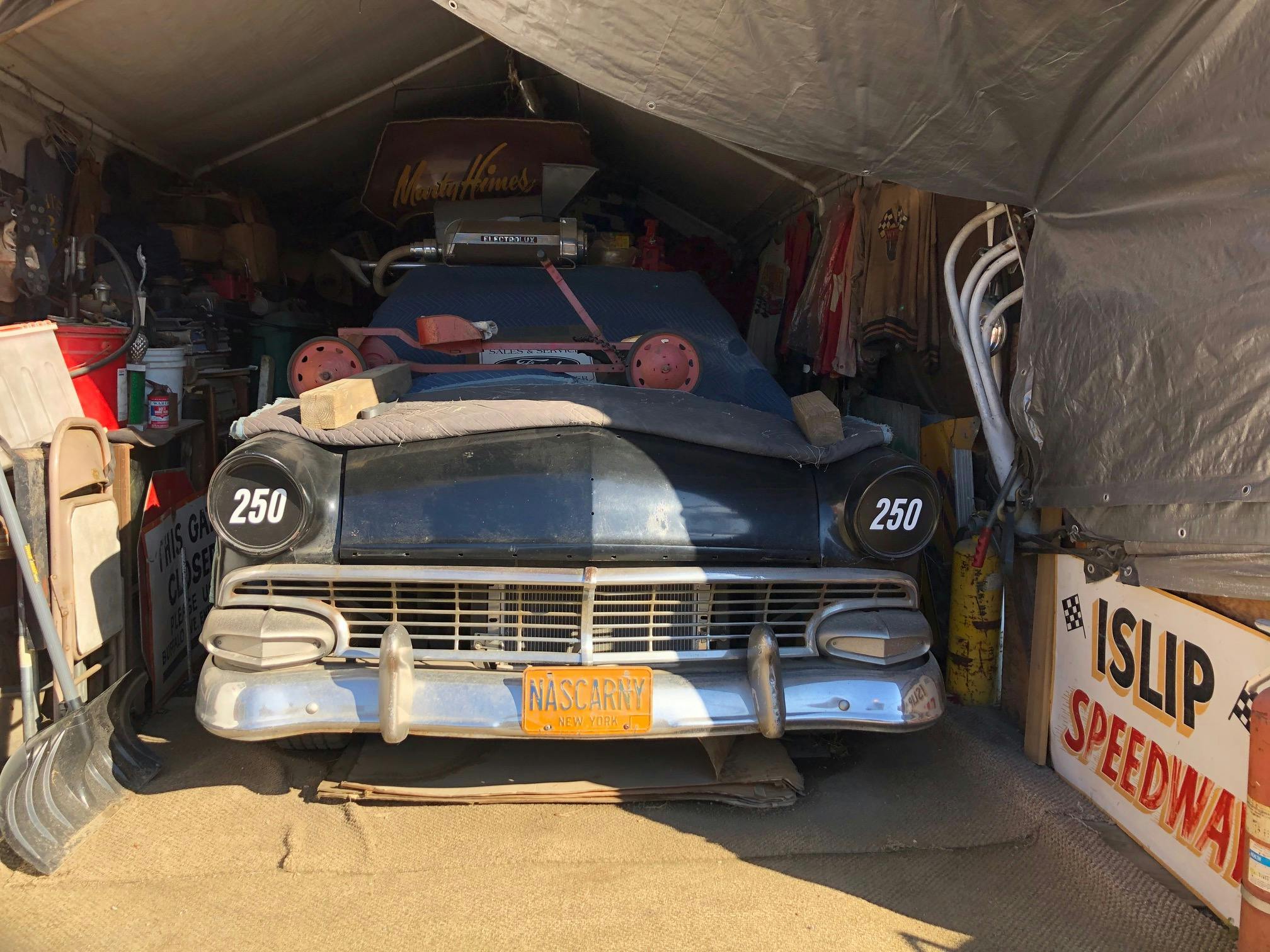
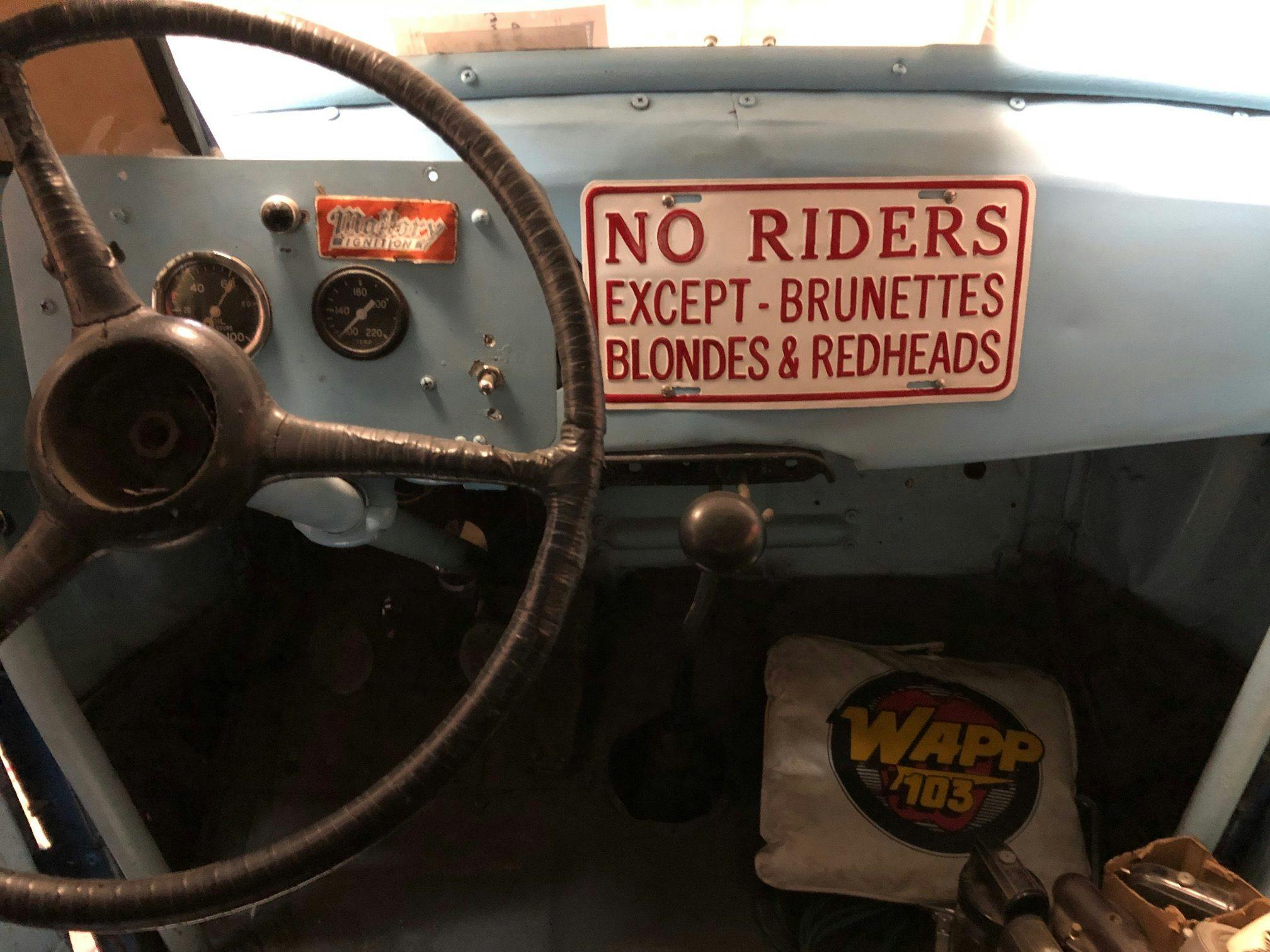

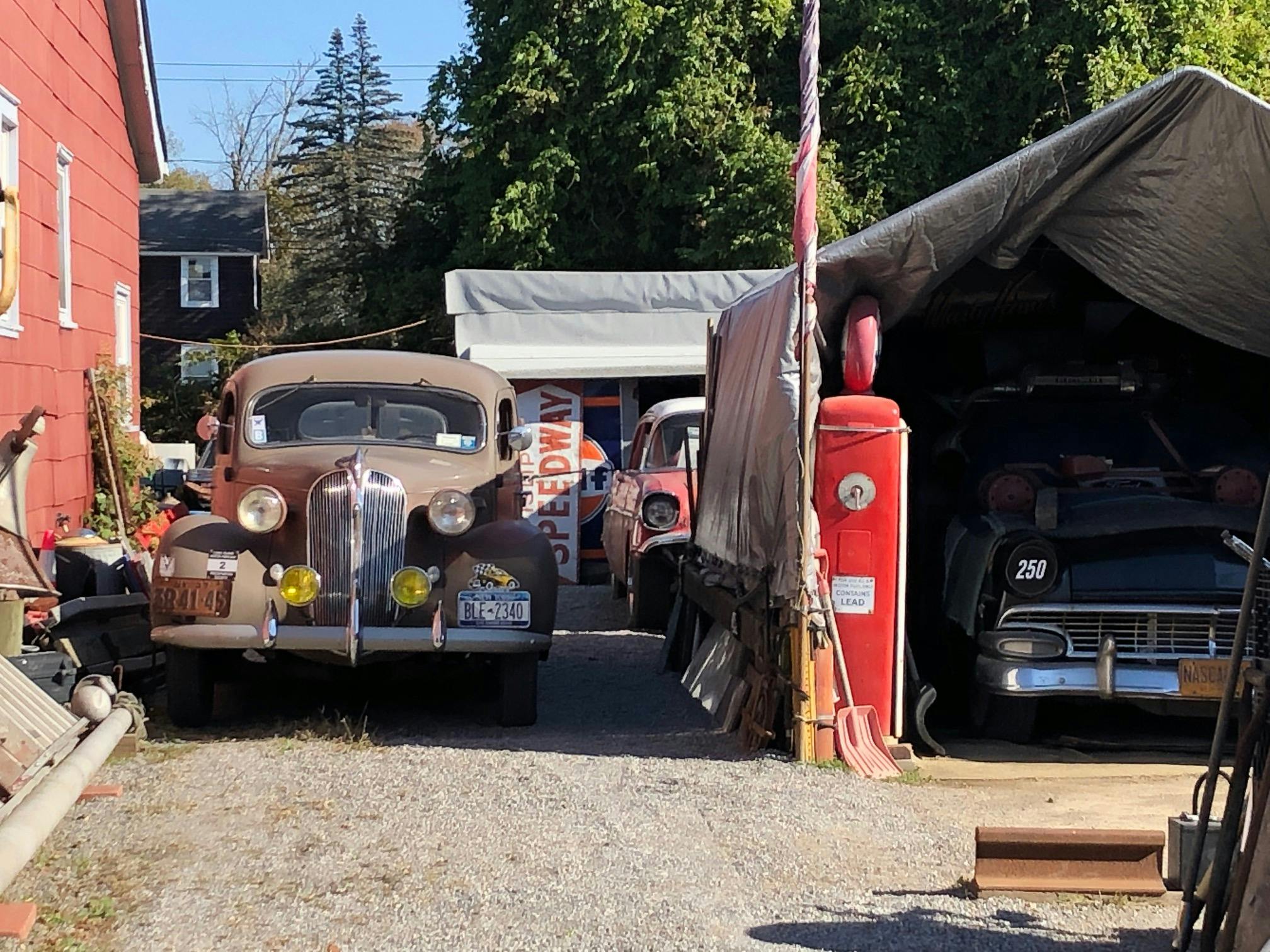
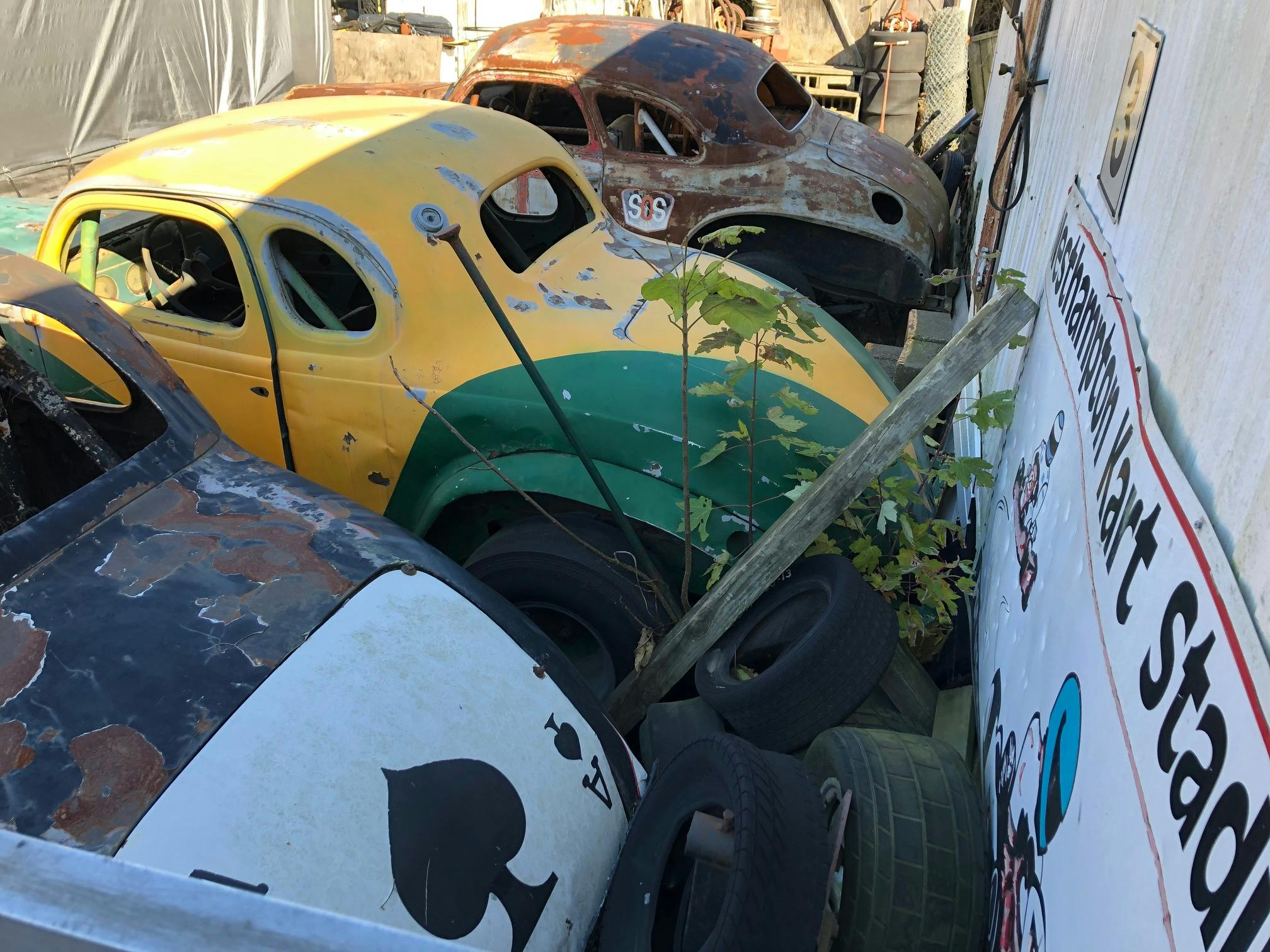
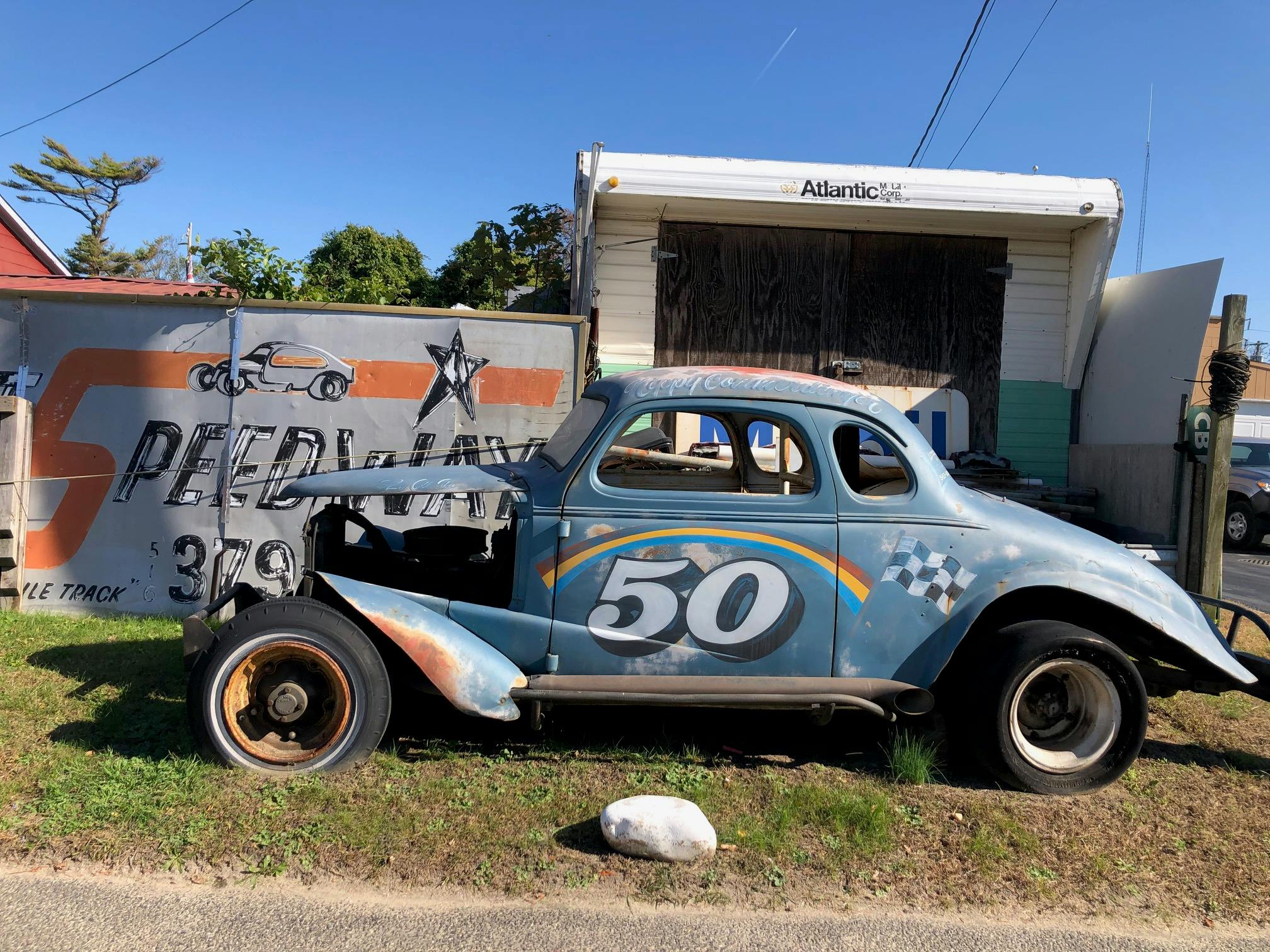



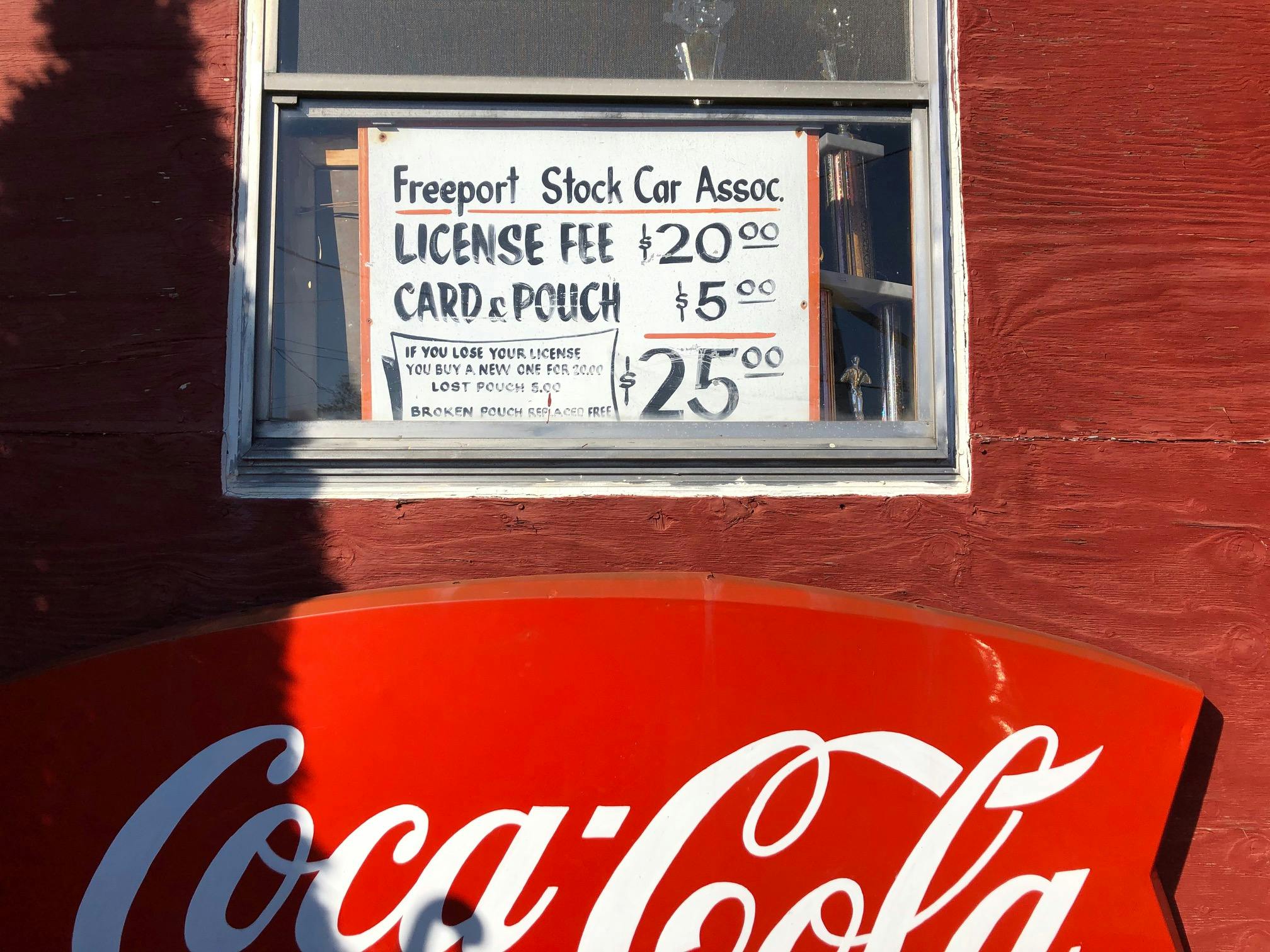
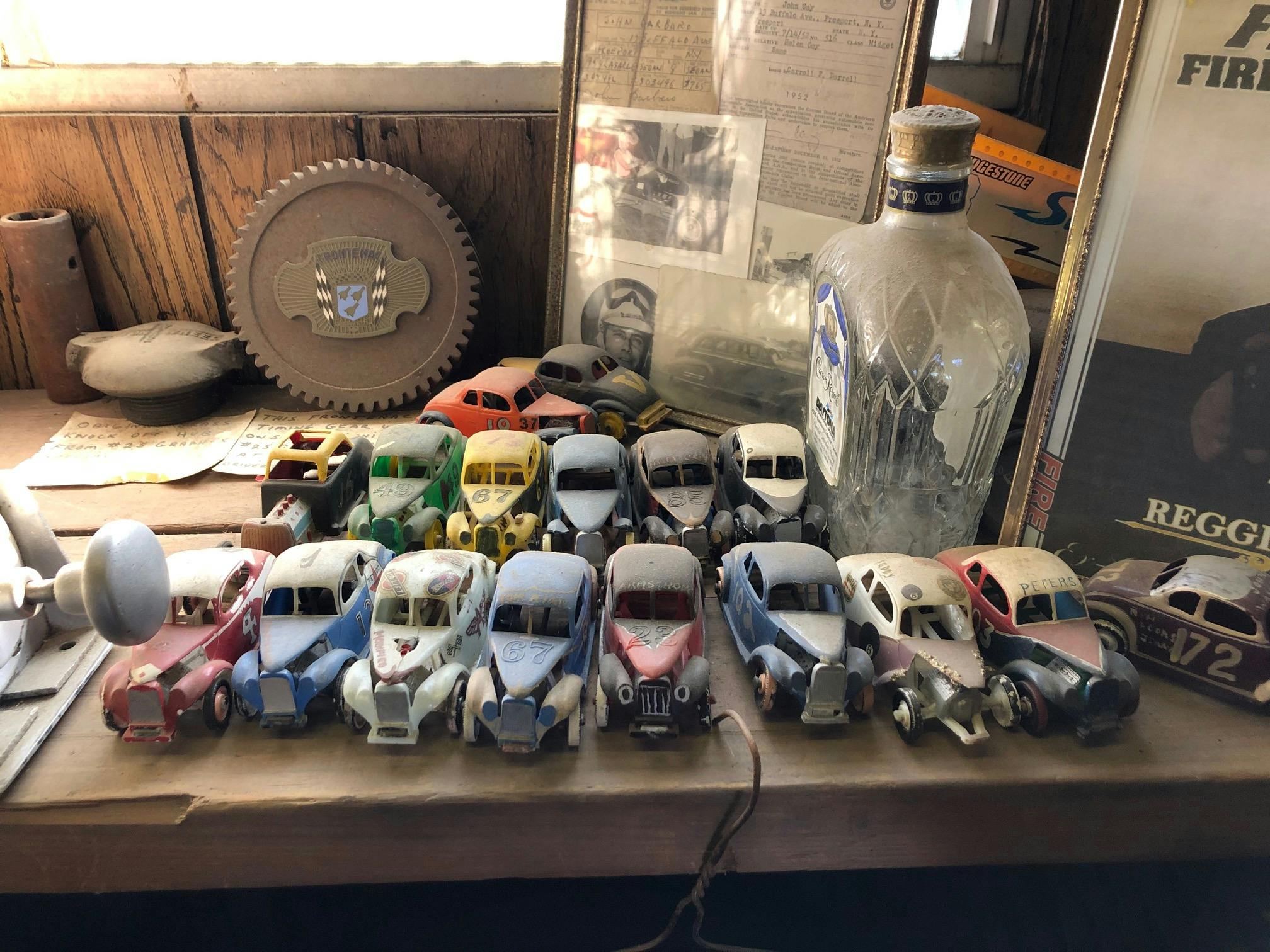
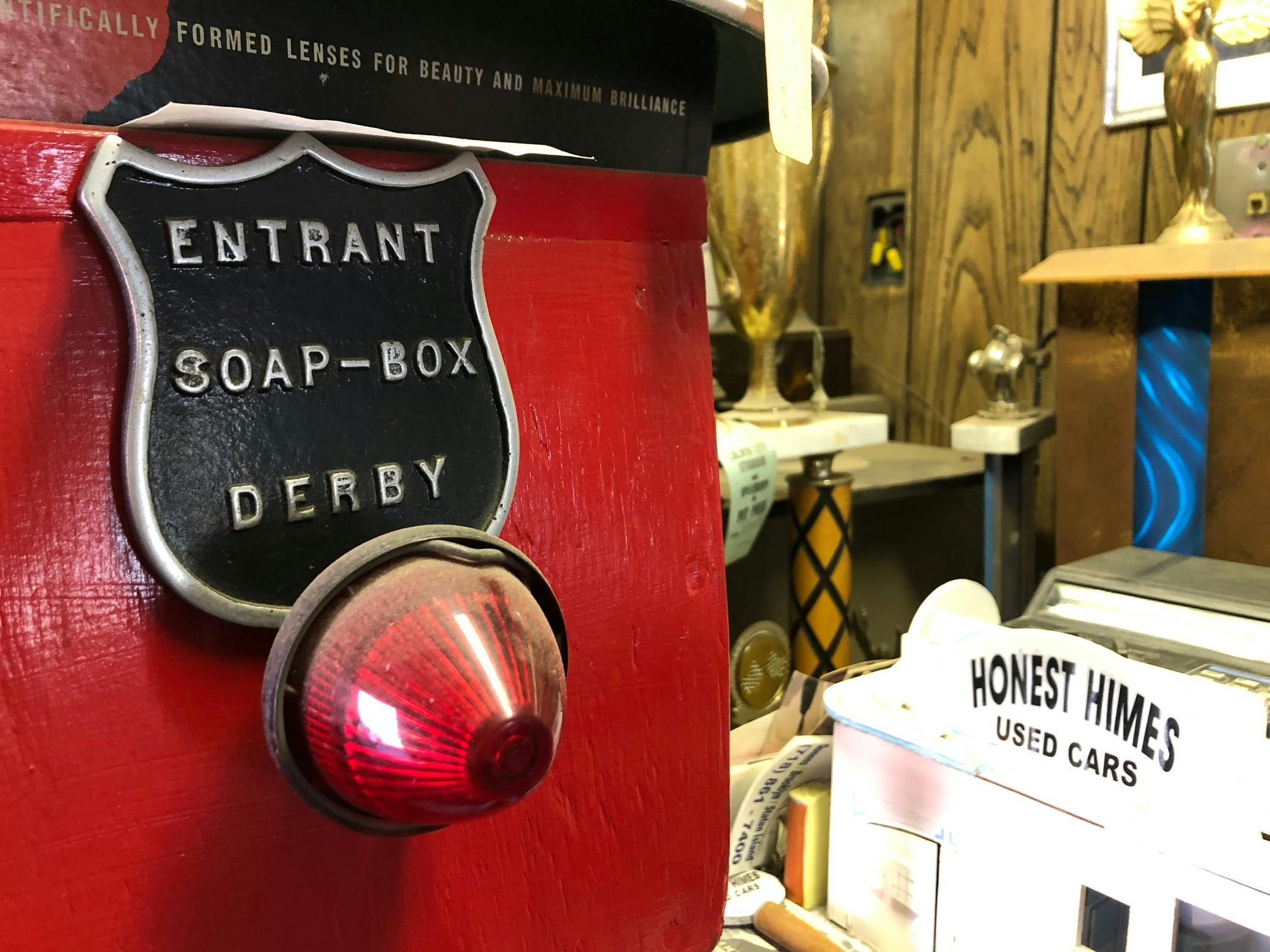
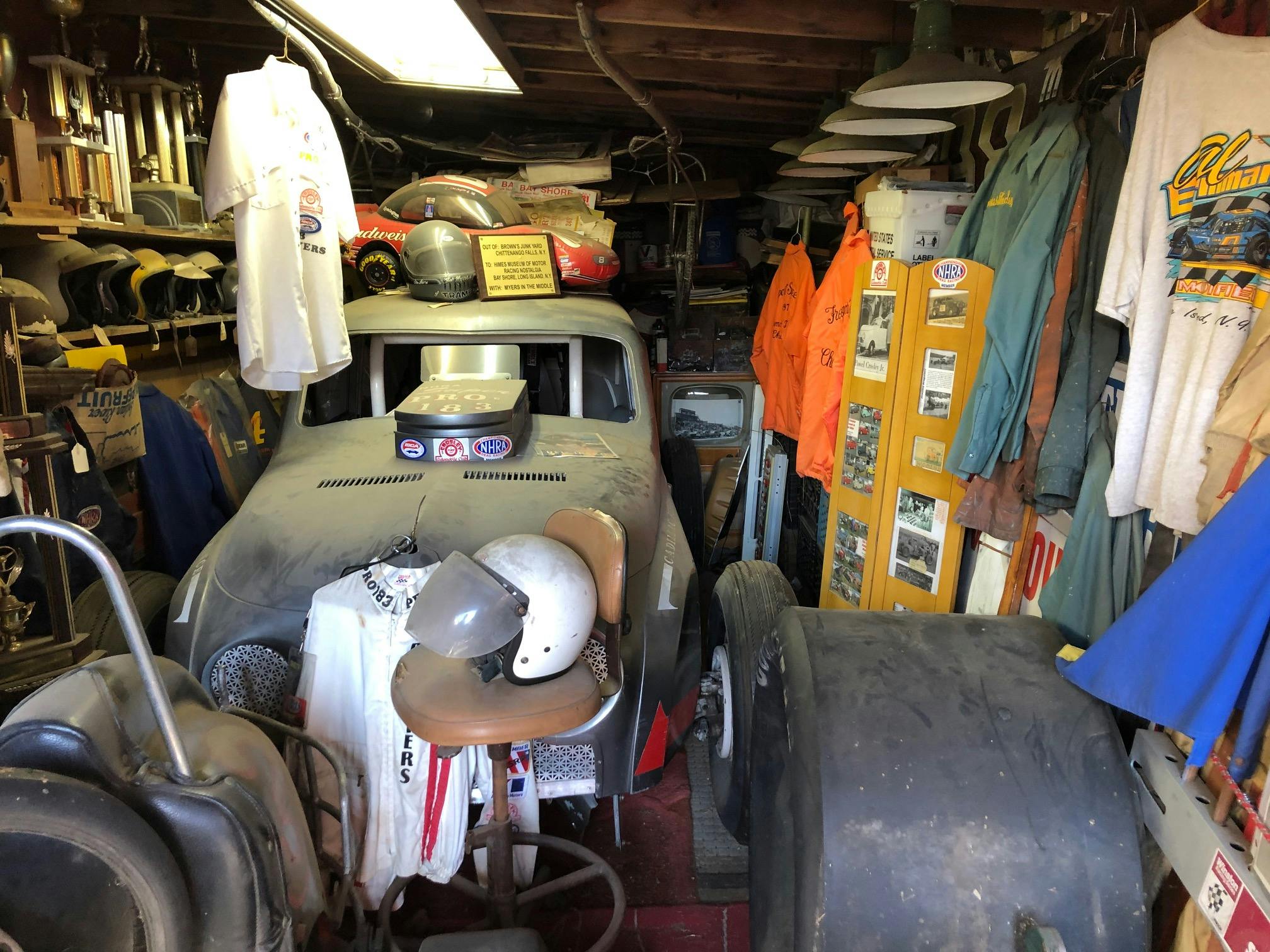

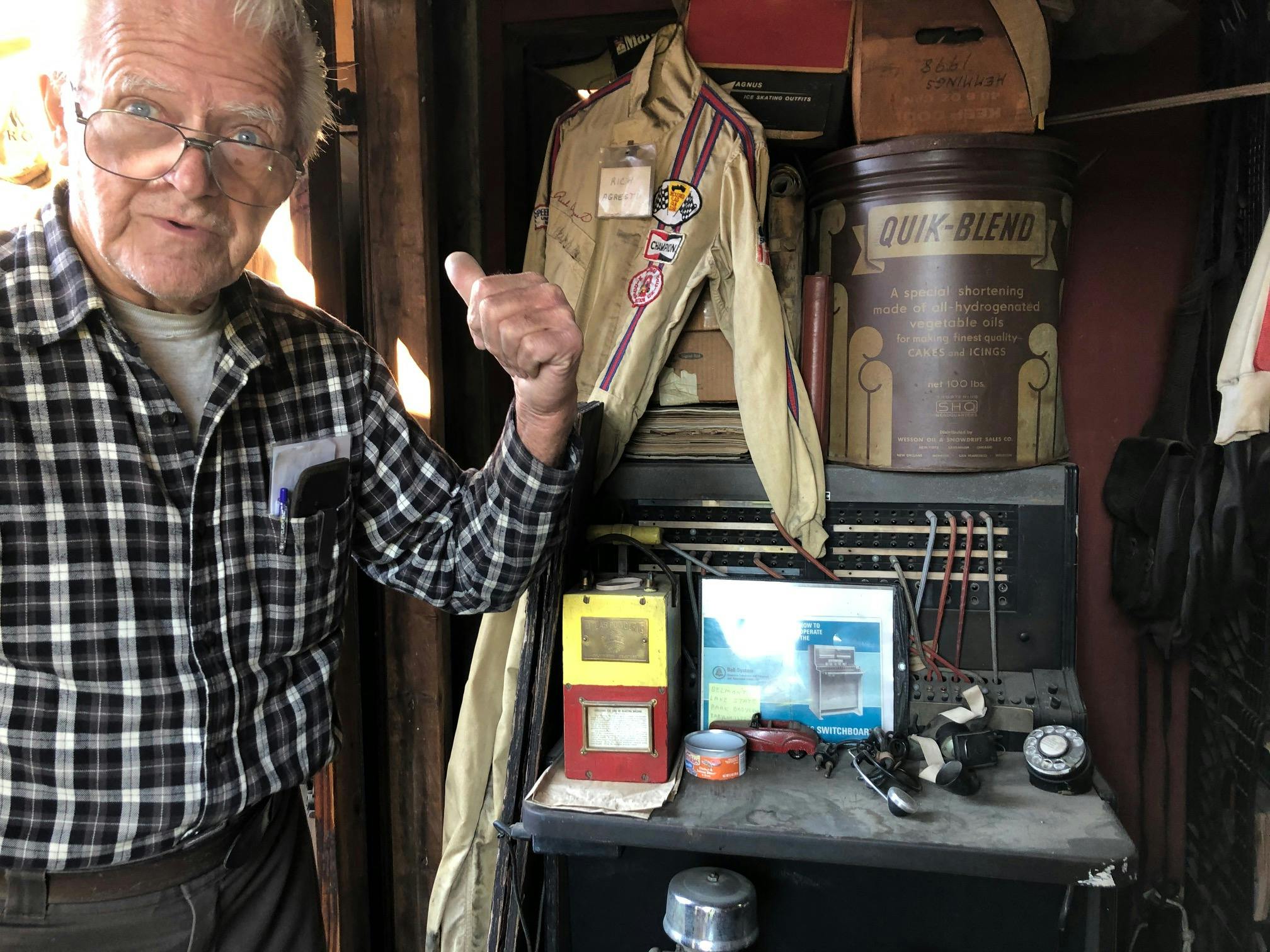
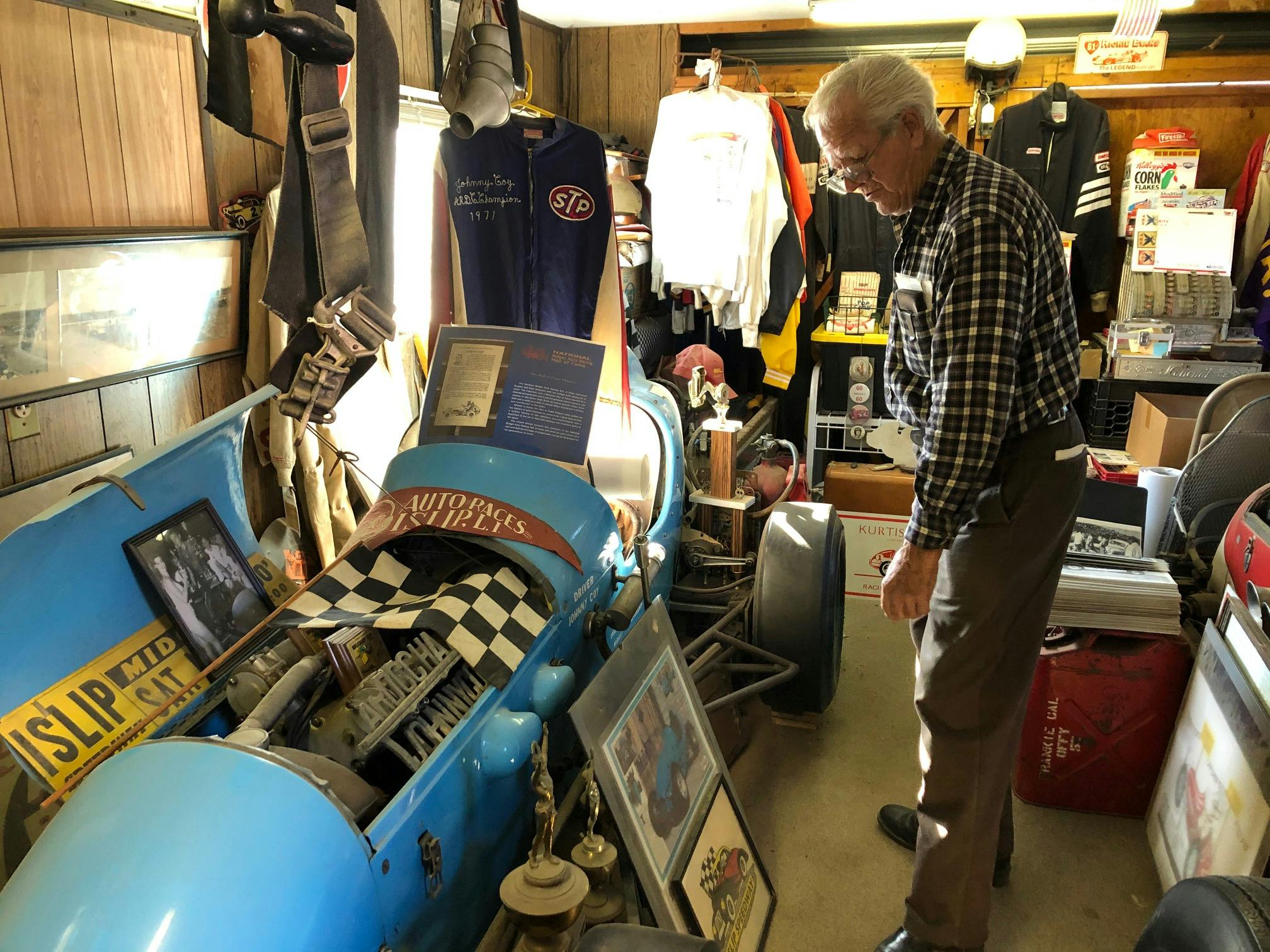

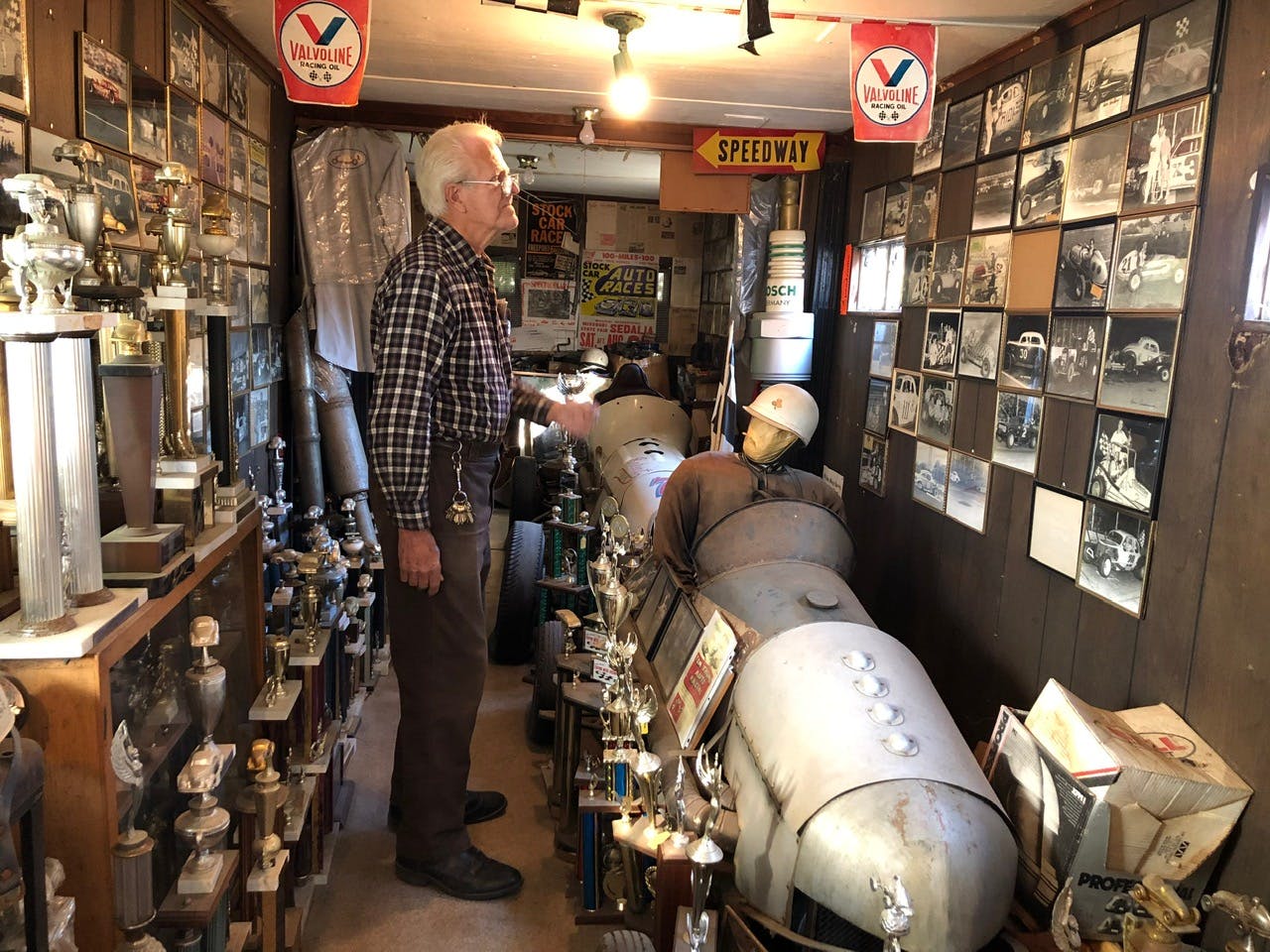
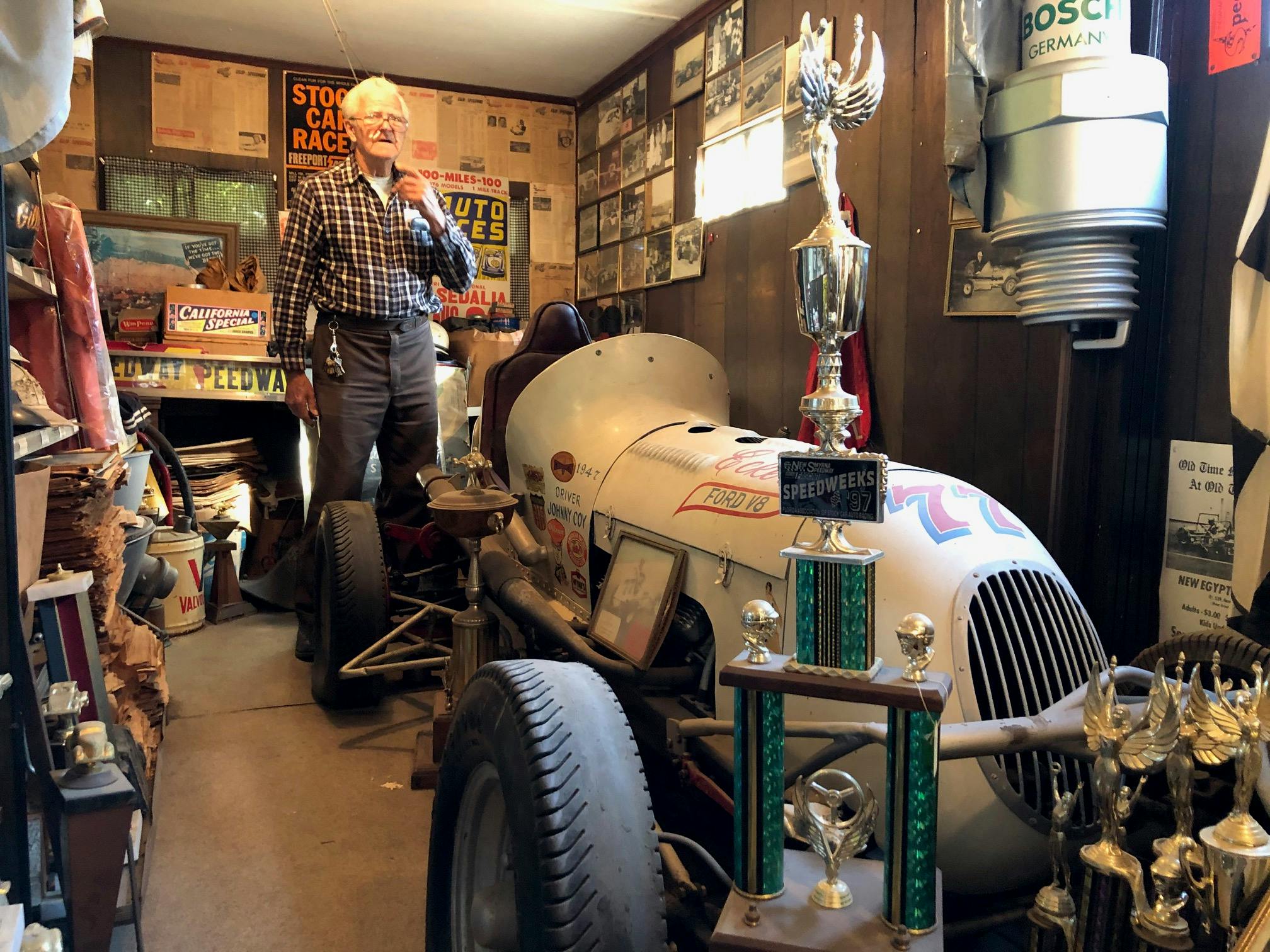
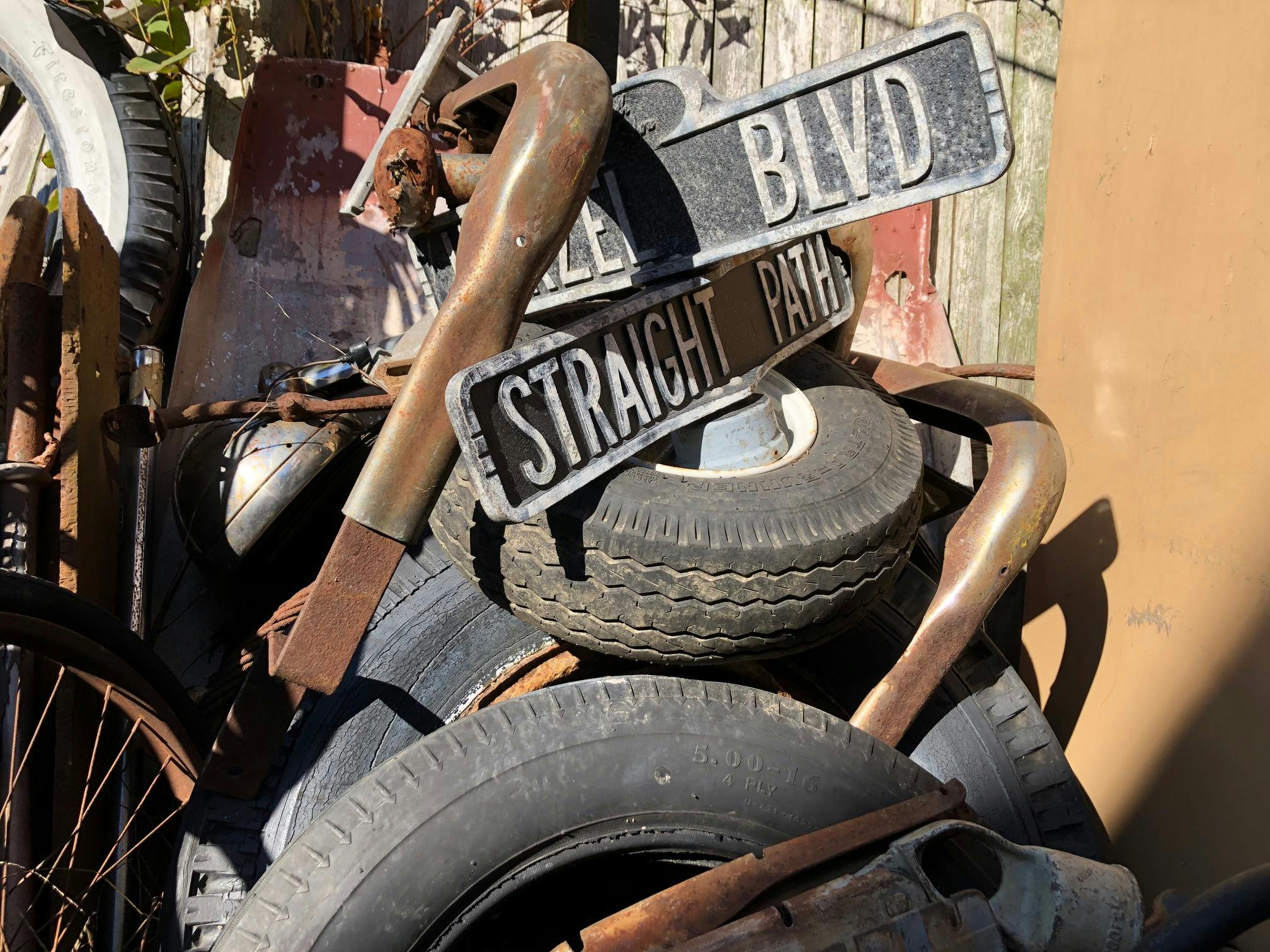
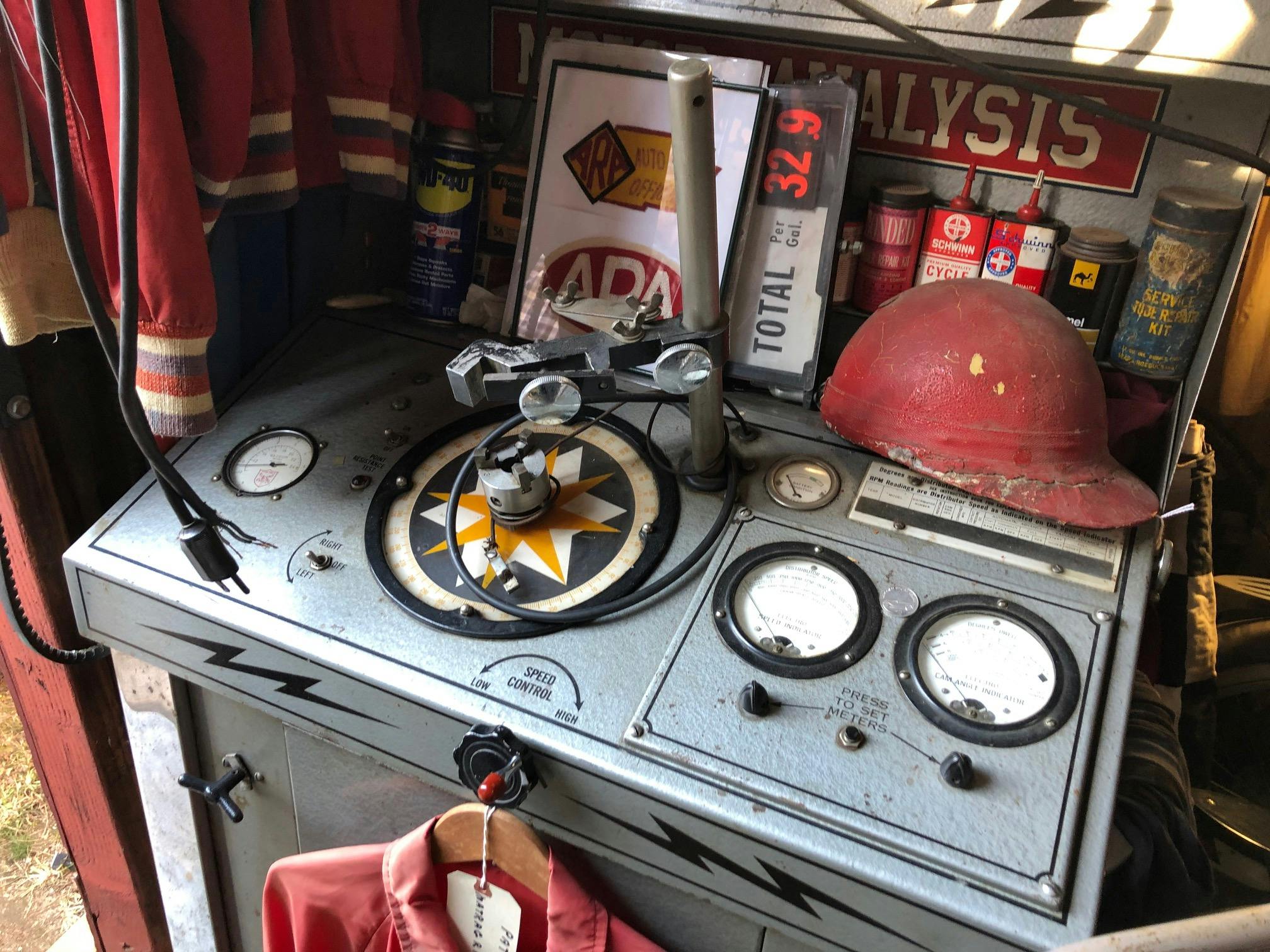
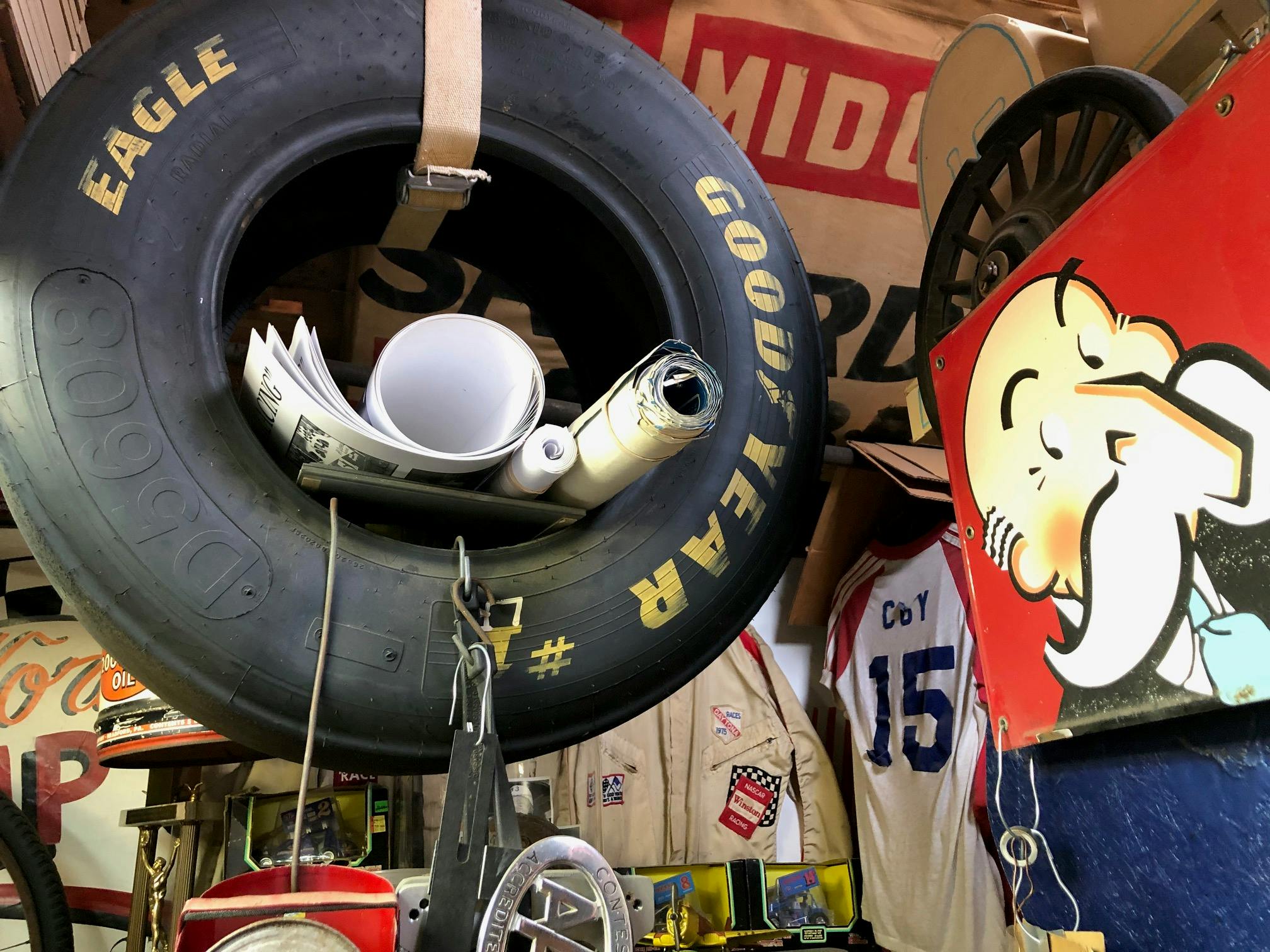
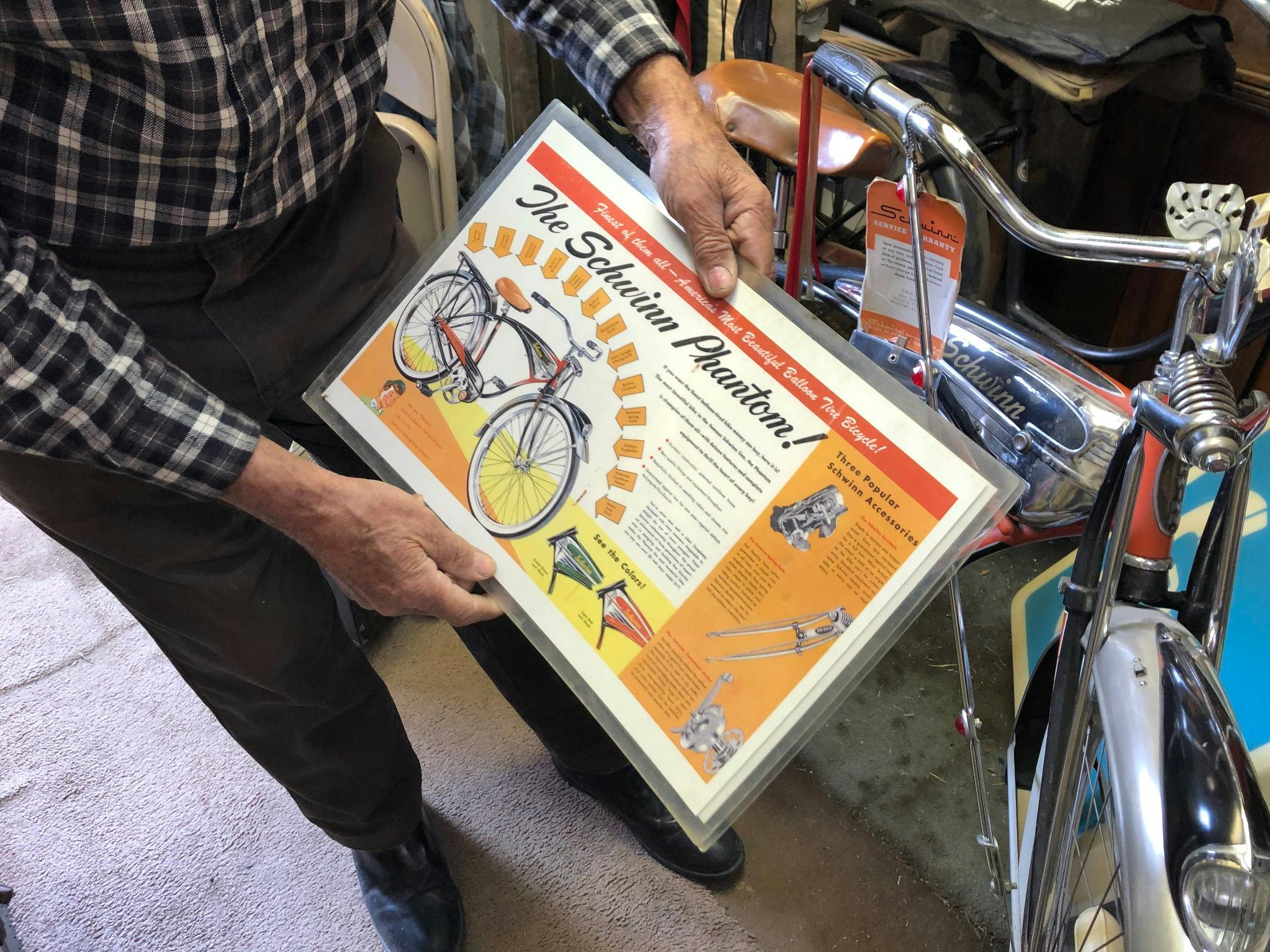
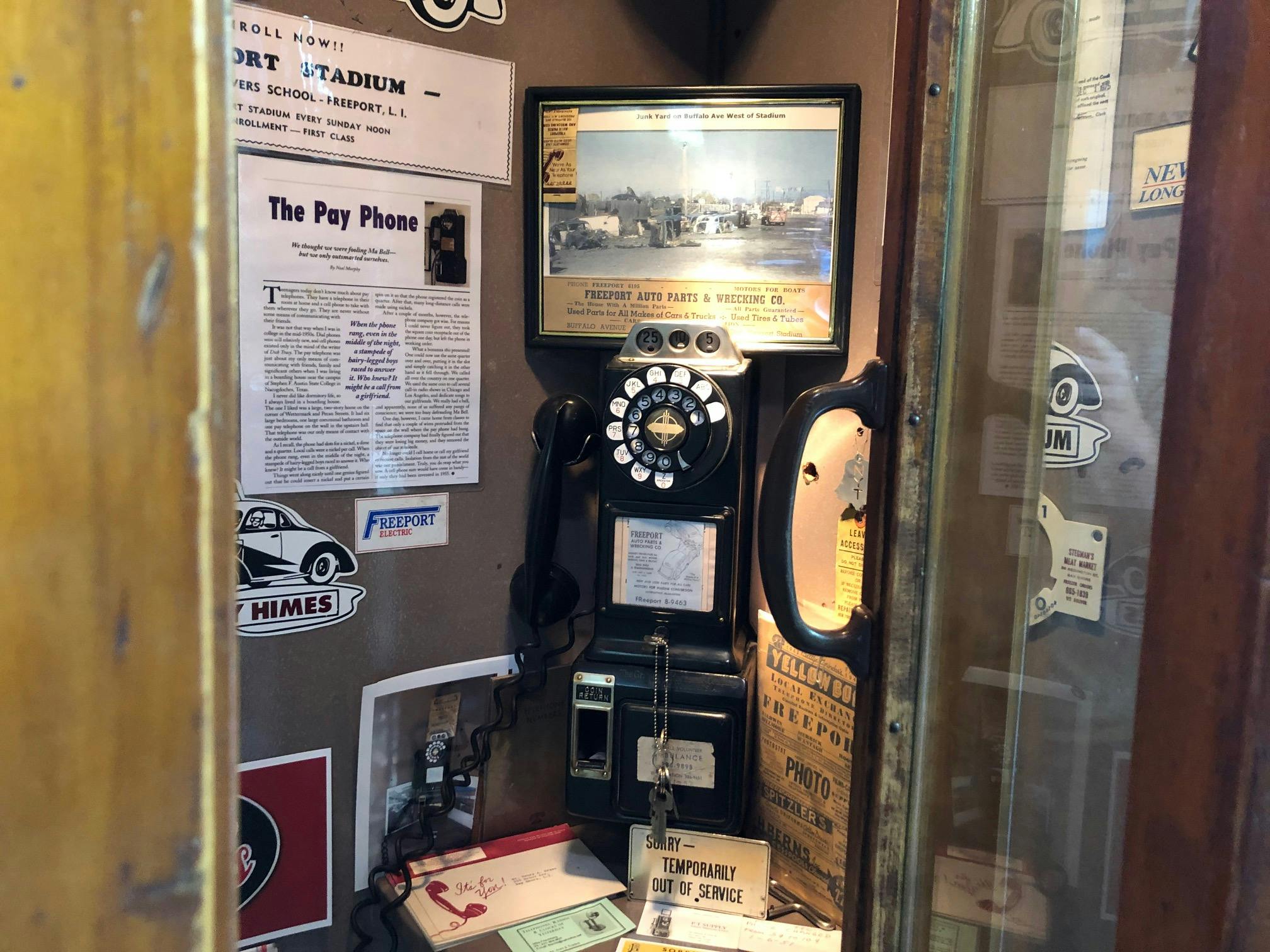
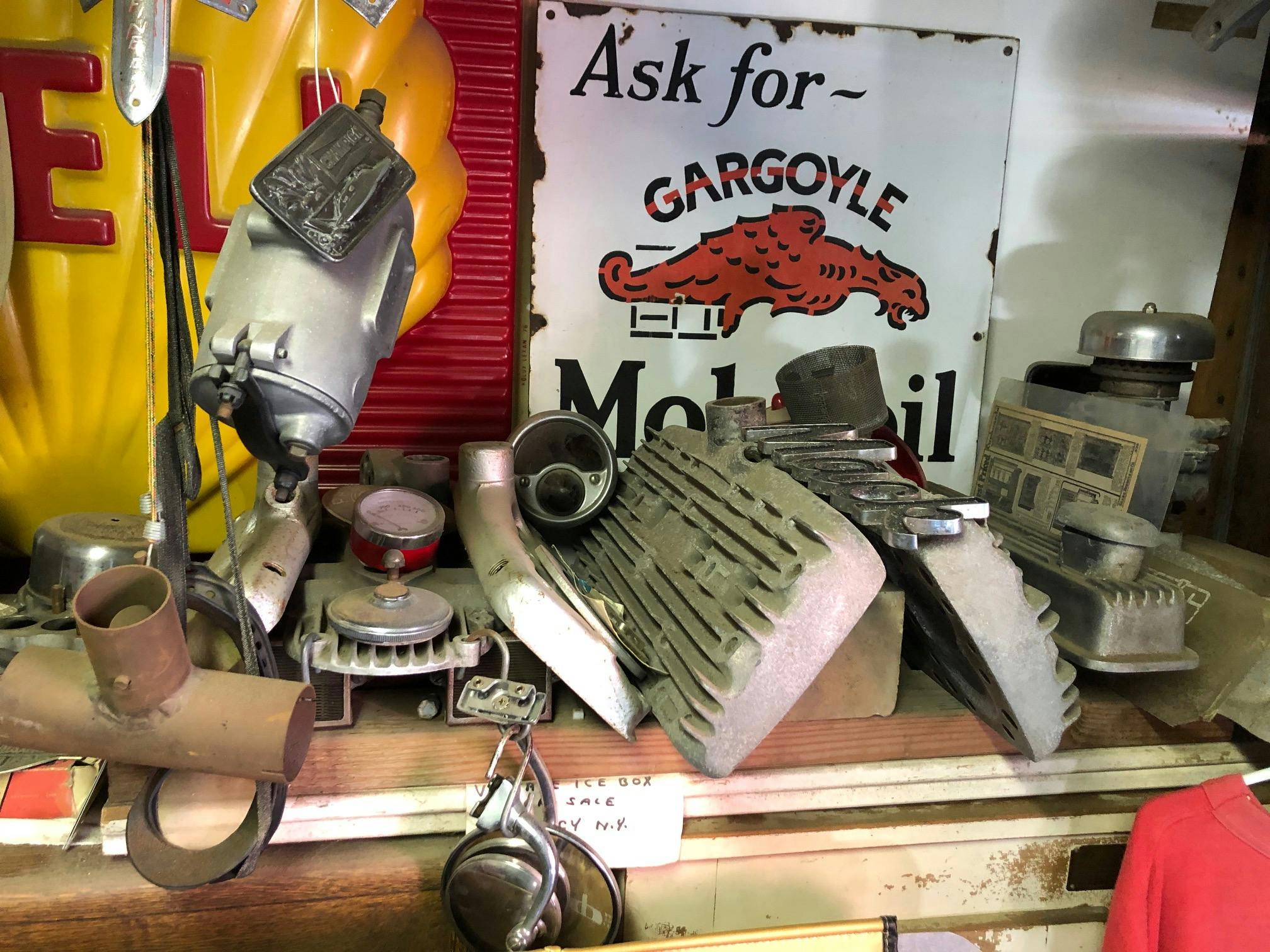
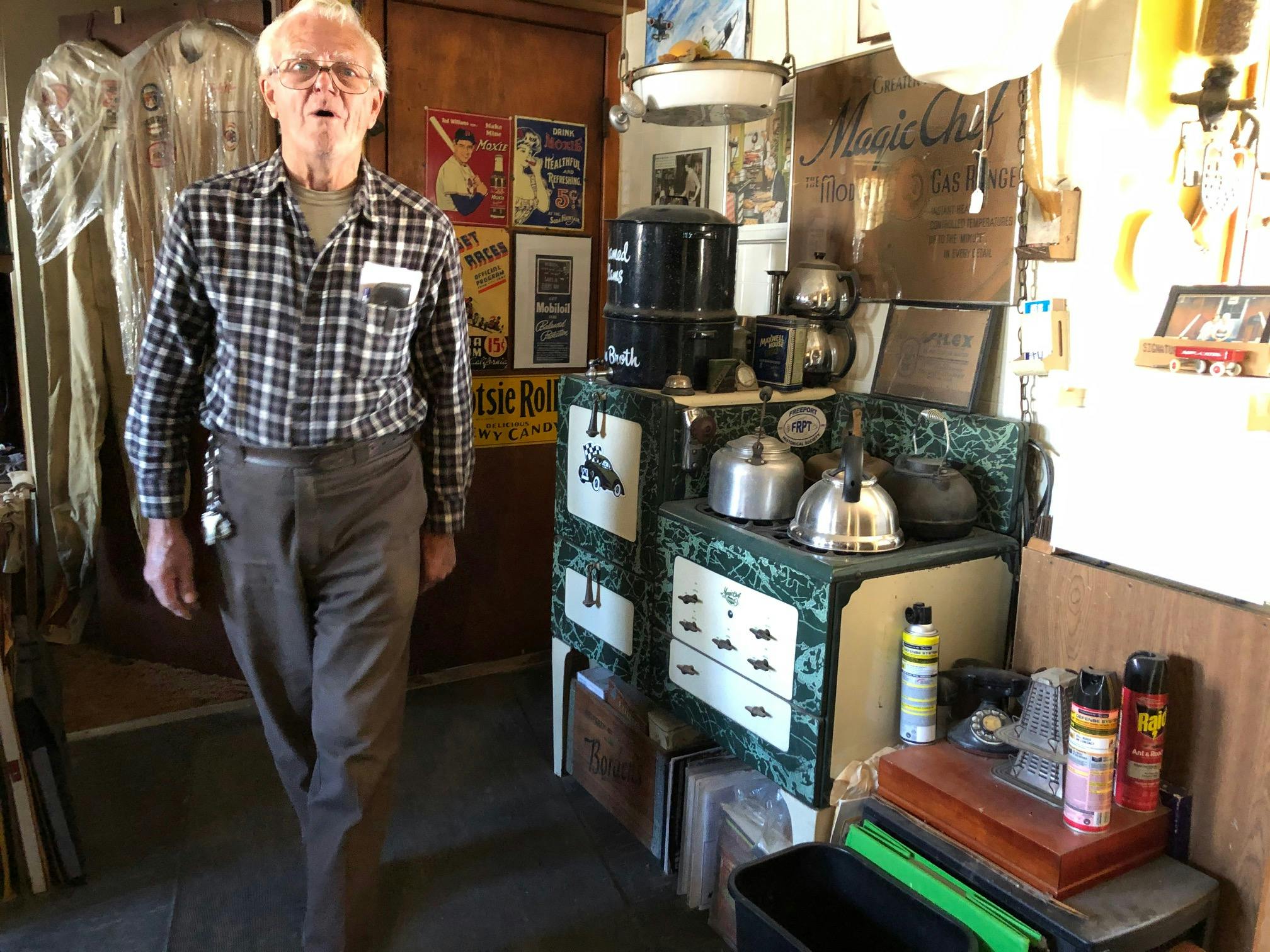
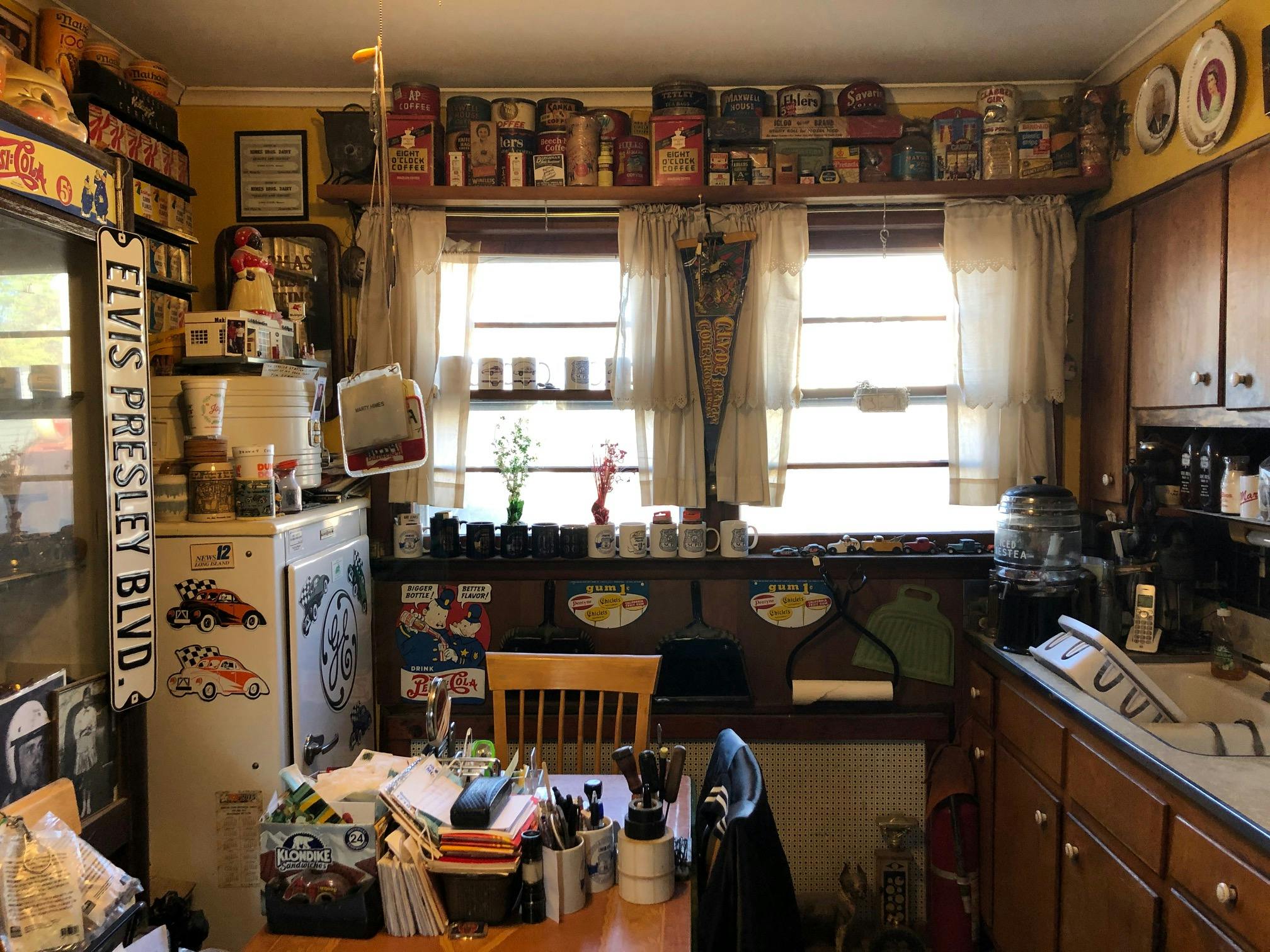
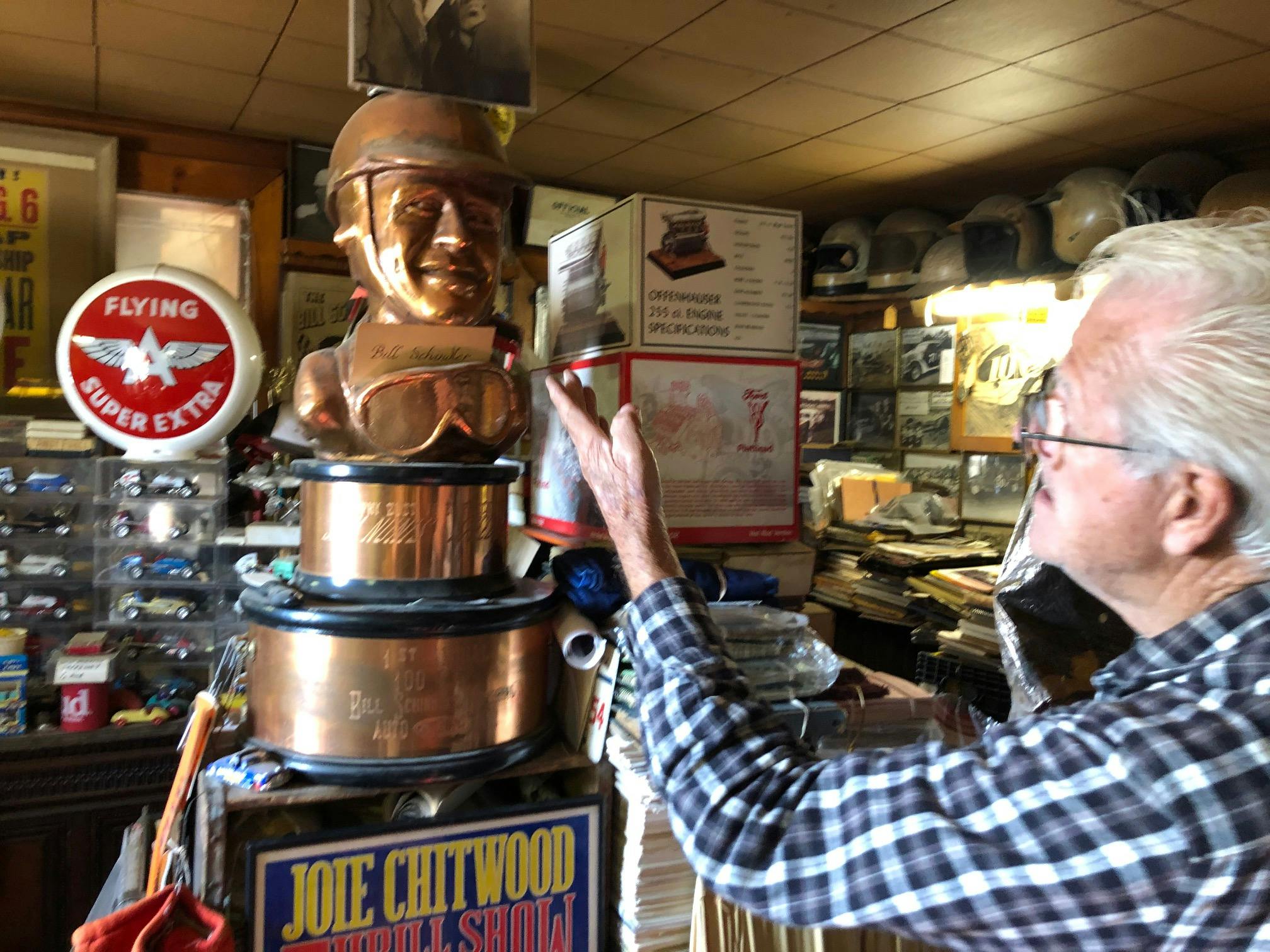
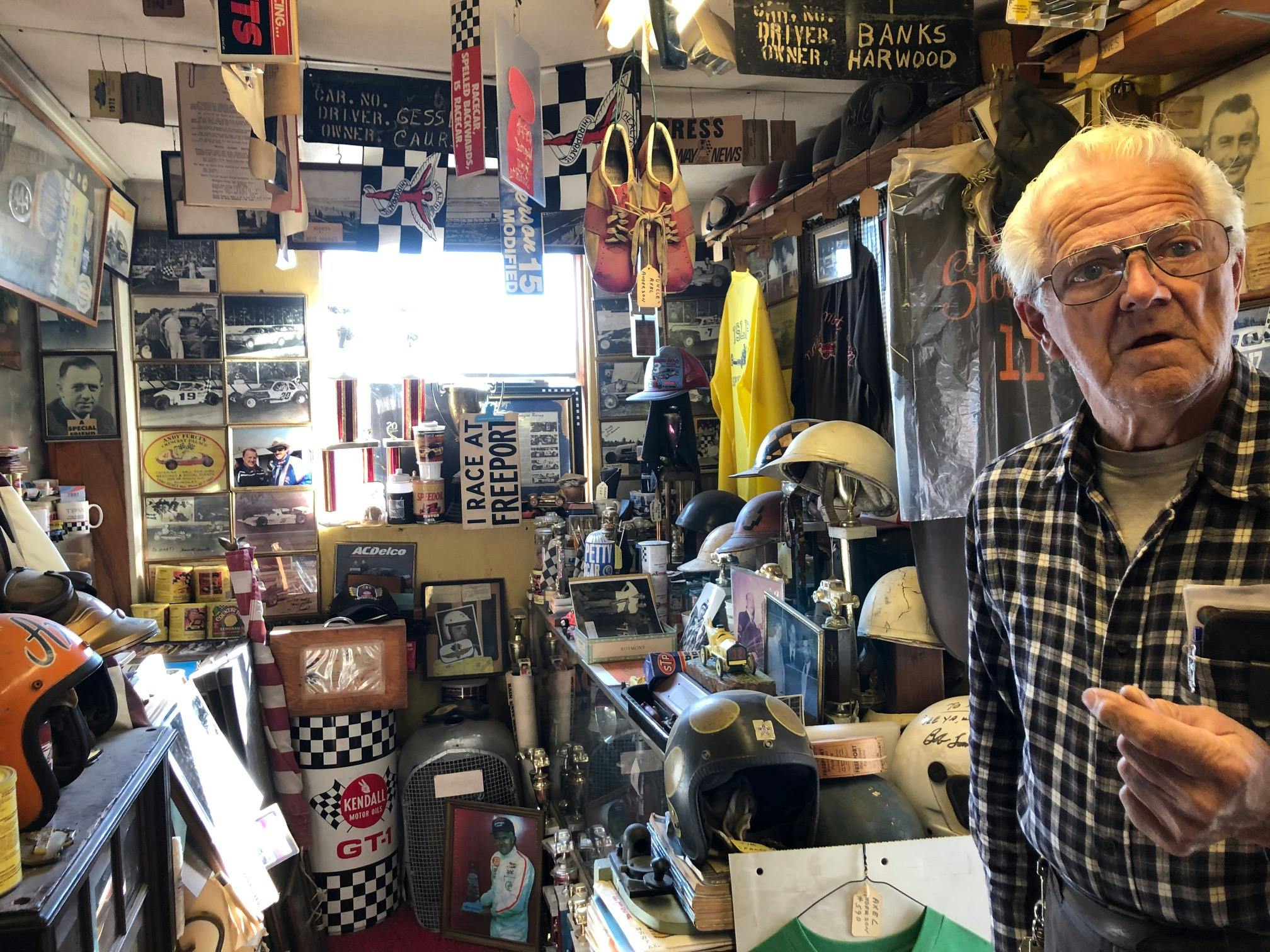
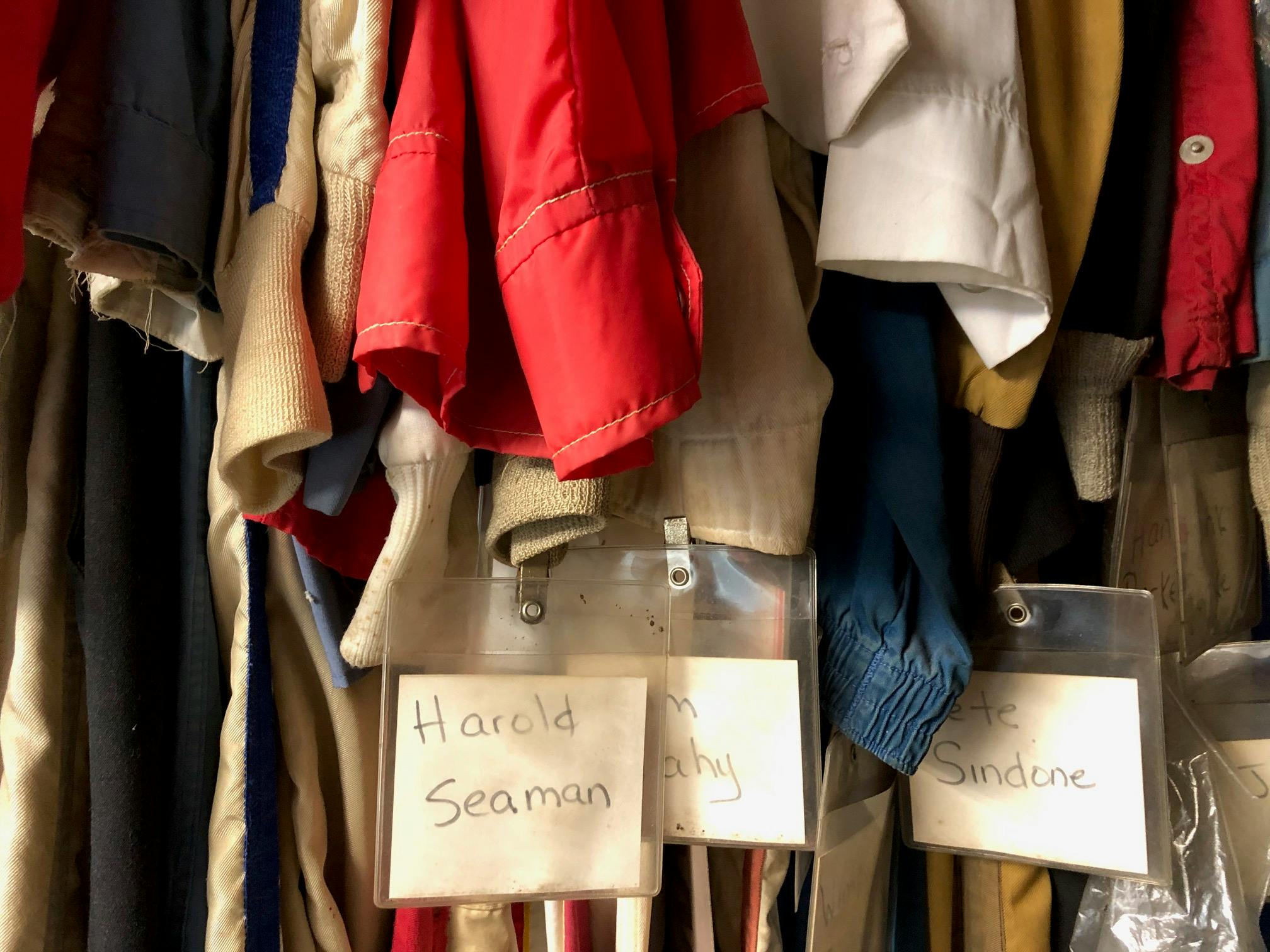
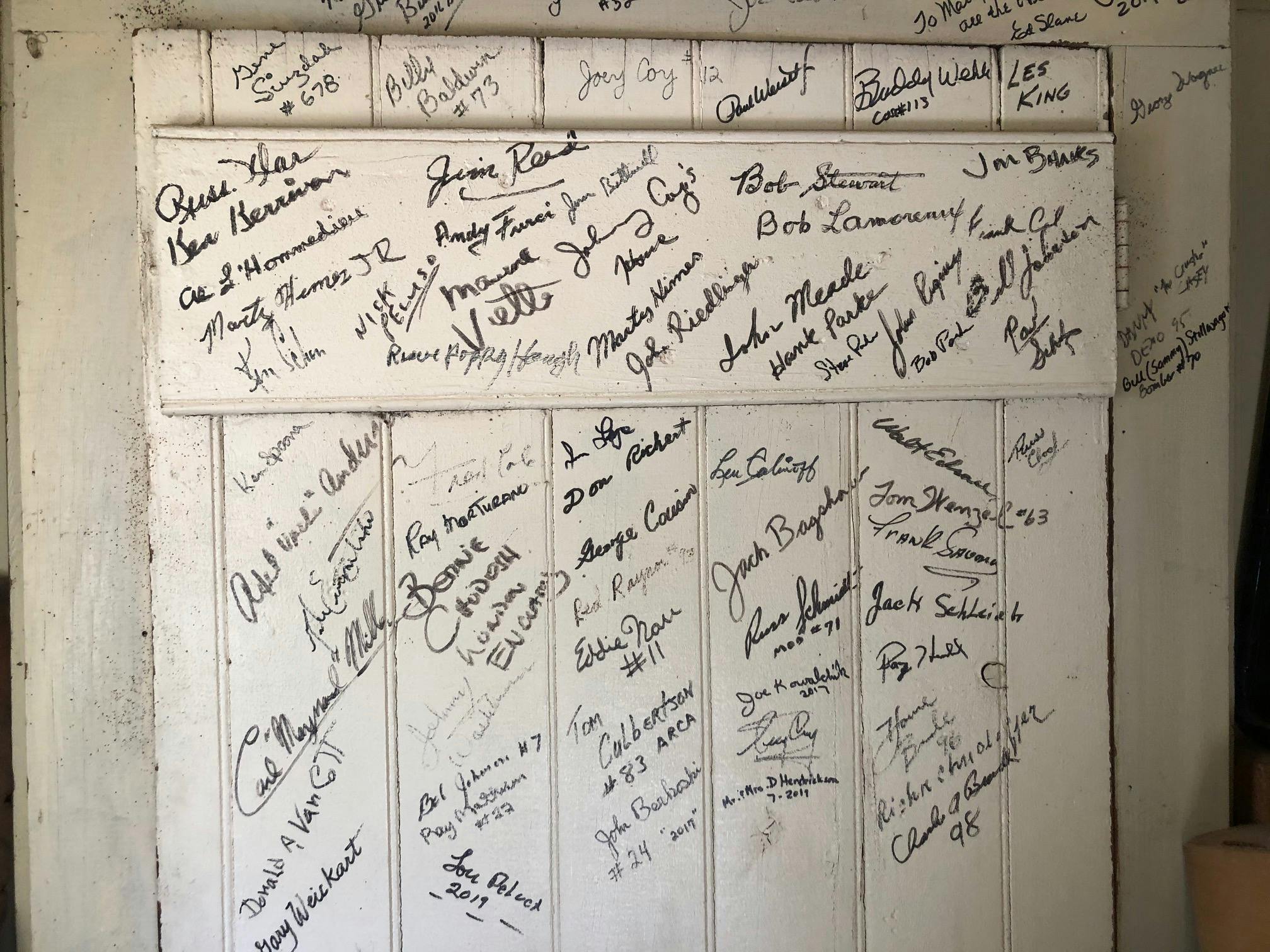

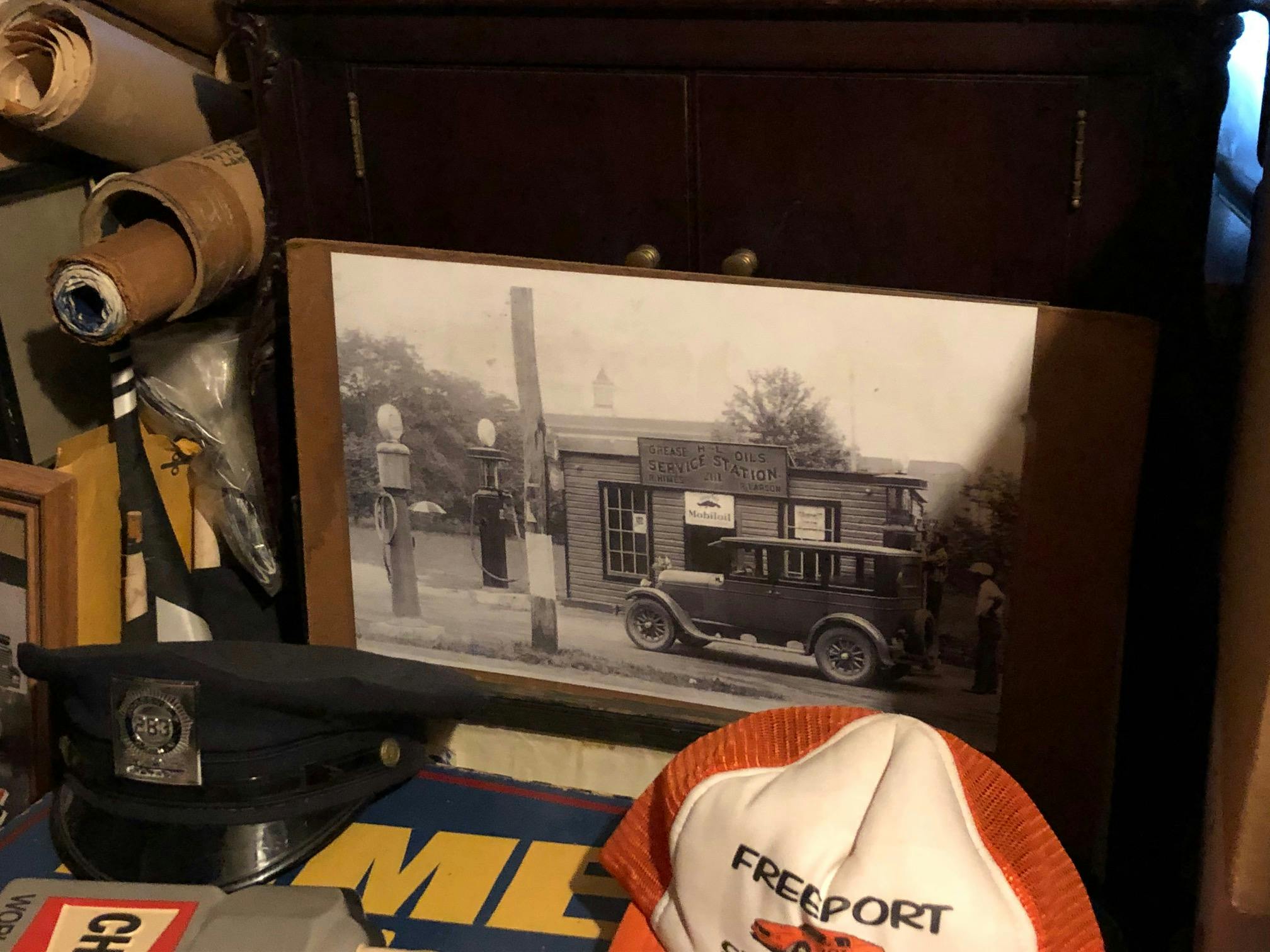



could you please respond to me , I have an old hand pump with Indy Logo on the knob. Someone told me you may know something about these.
Working with a local legislature to help preserve this in a museum and learning center
Thank you Brian. I see 15 on the house. What street is he on? I’d love to bring him a chocolate eggcream from Coyle’s
Very sad news. Marty Himes has passed away on 10/23/2023
He was one of a kind and will be missed by all who knew him.
Was Marty a retired Suffork County police officer?
wow those are great pieces of history. thank you for saving our racing history. i lived near islip speedway and use to ride my bicycle to the track and watch the race then when it was over we would ride our bicycles on the track.